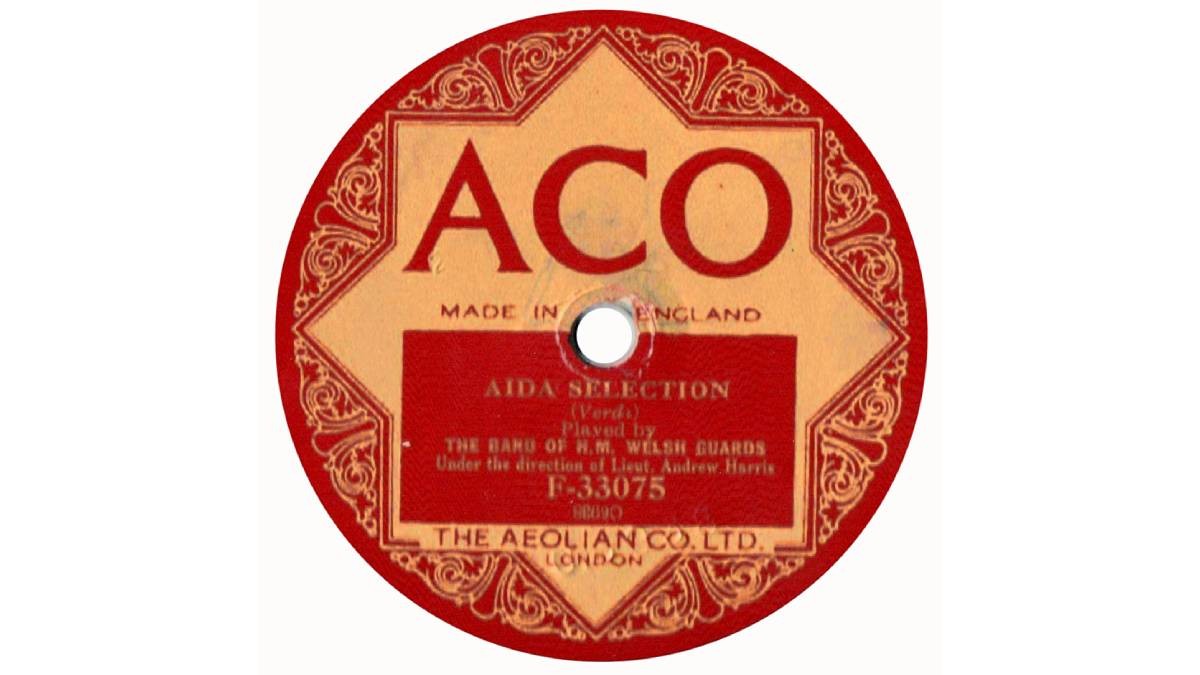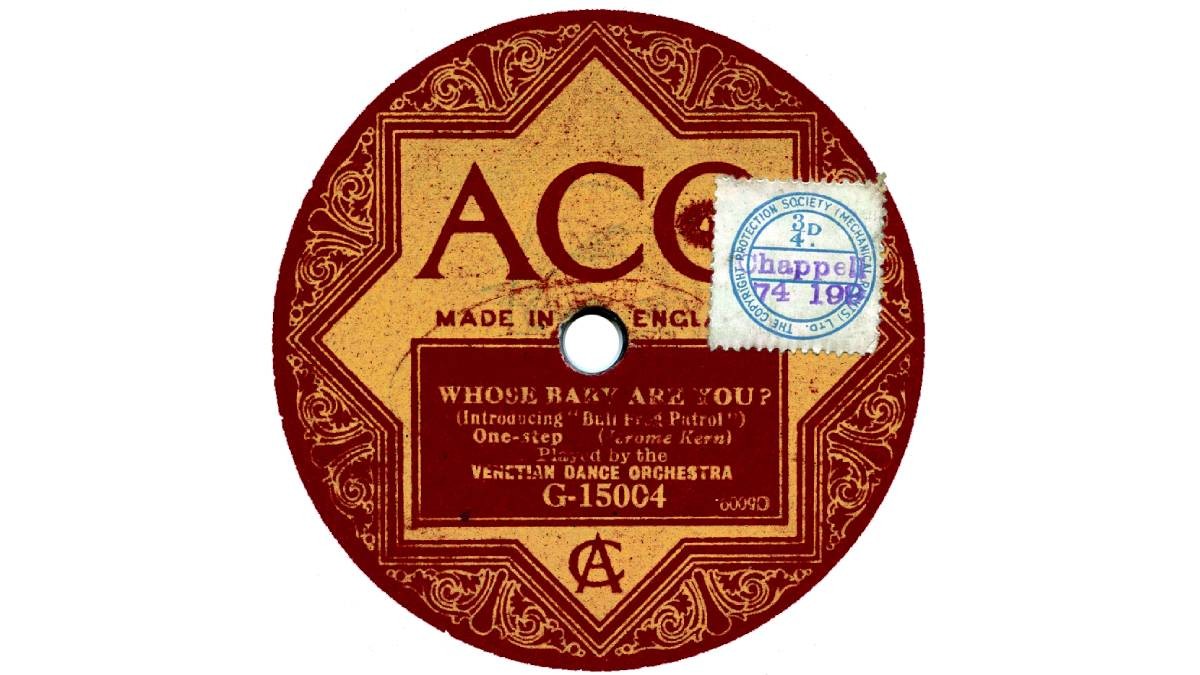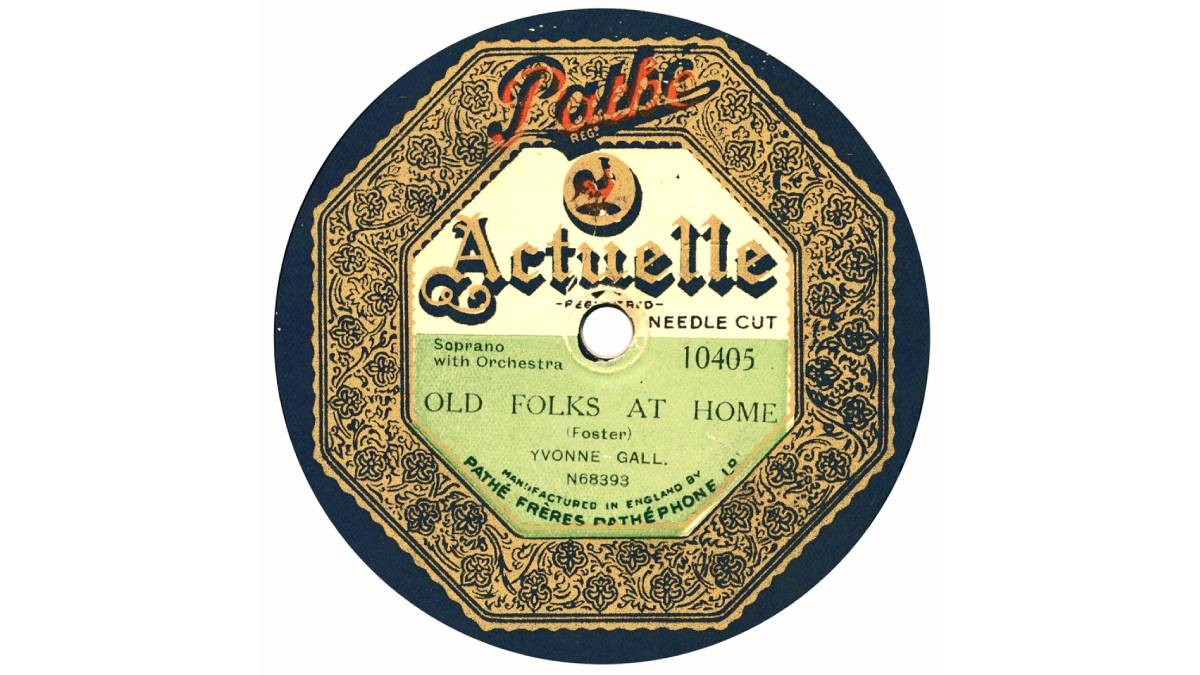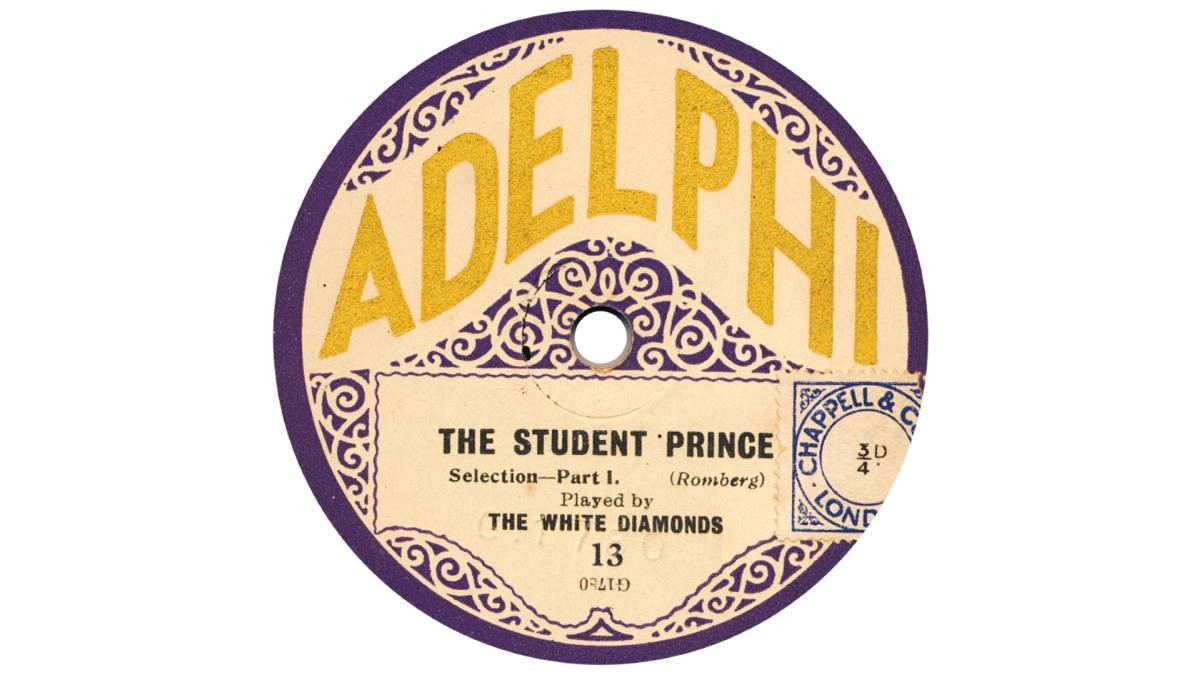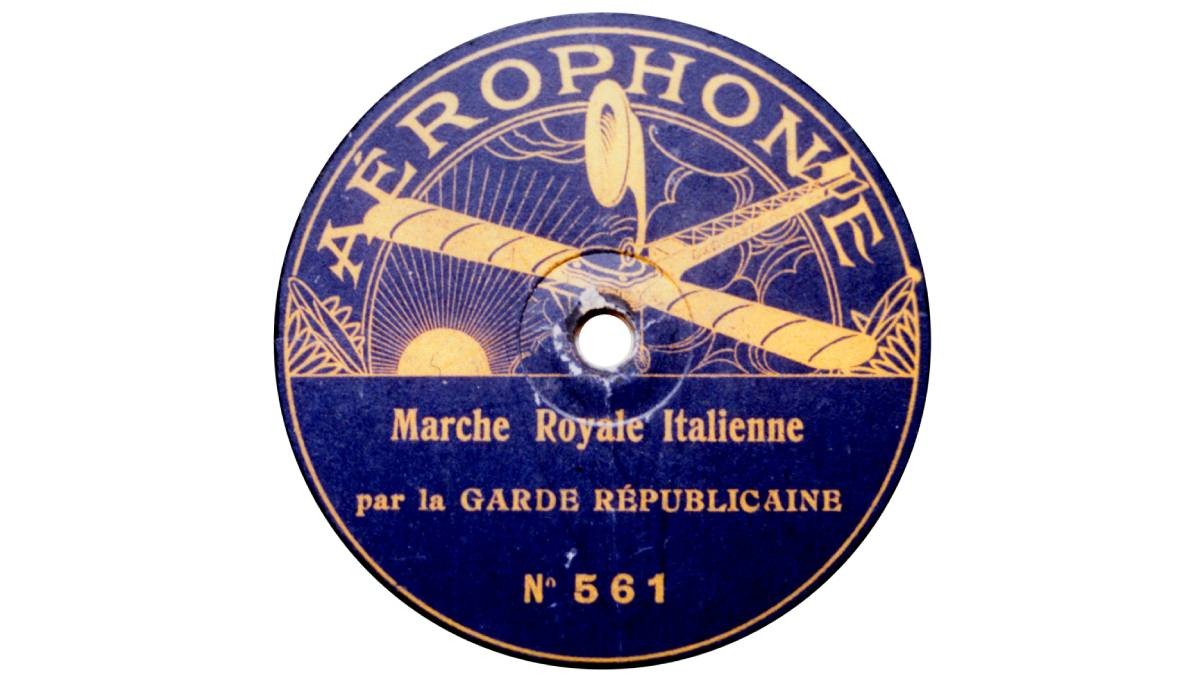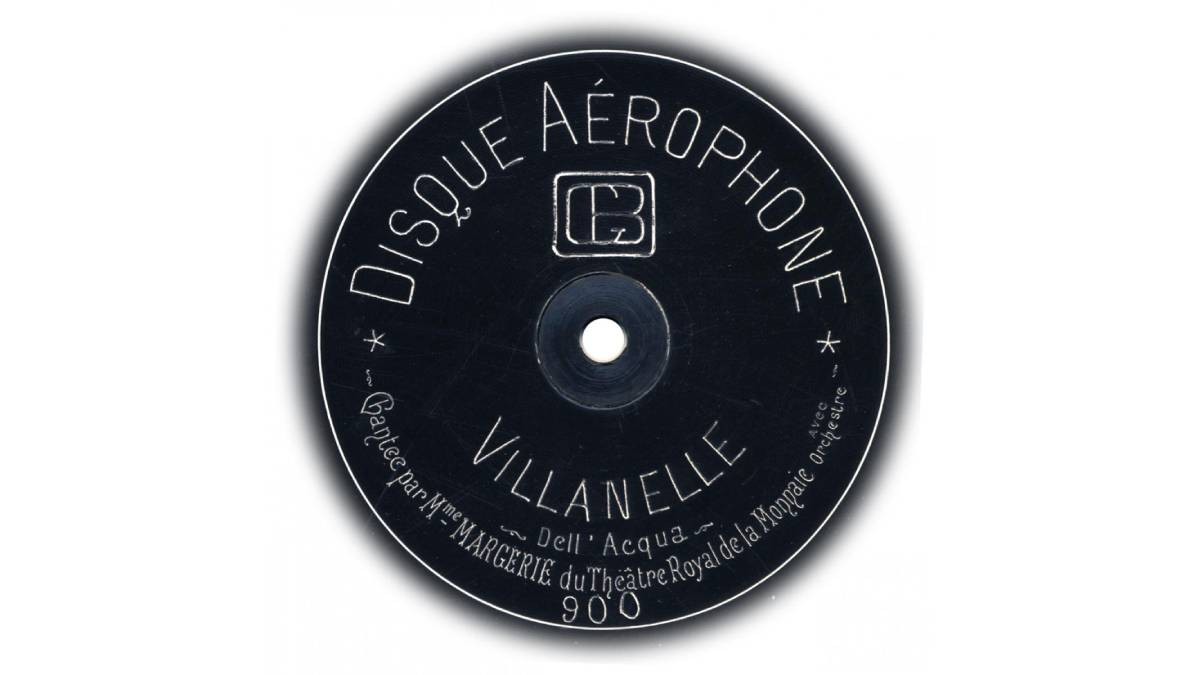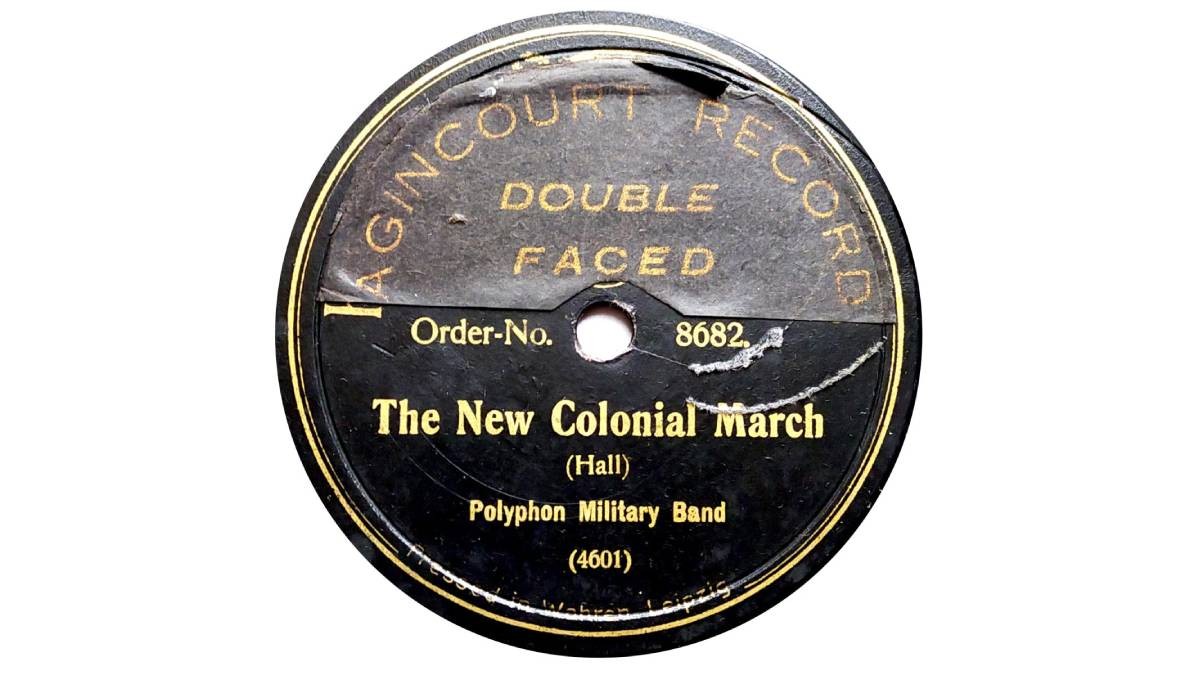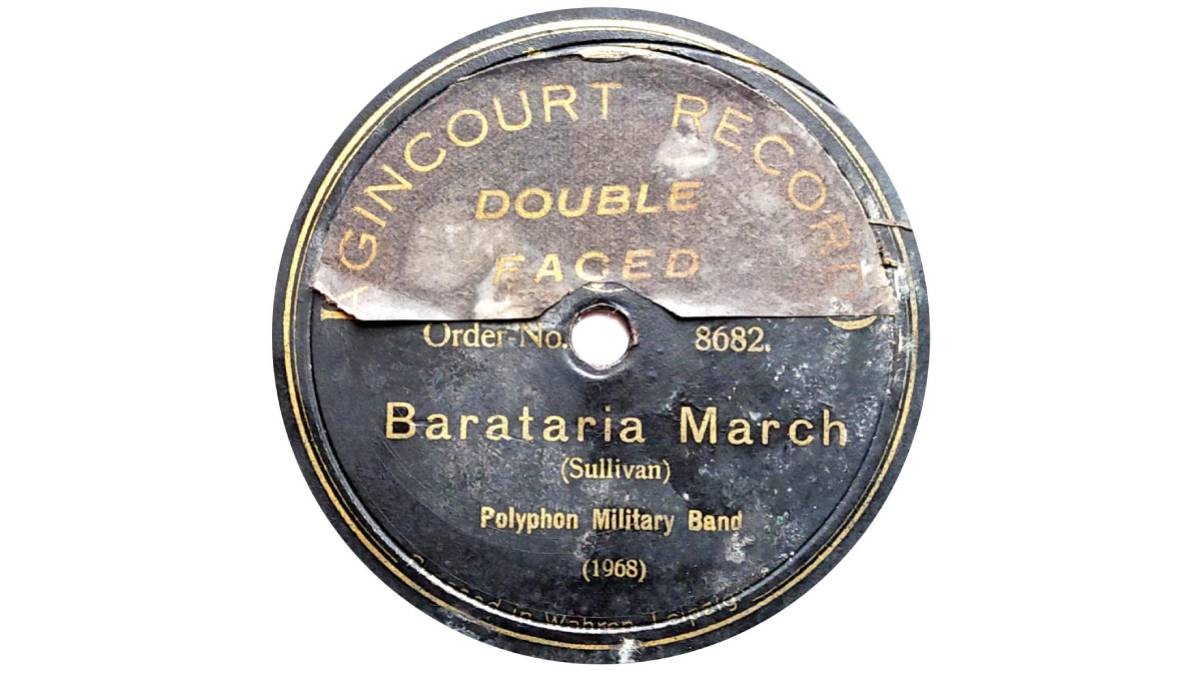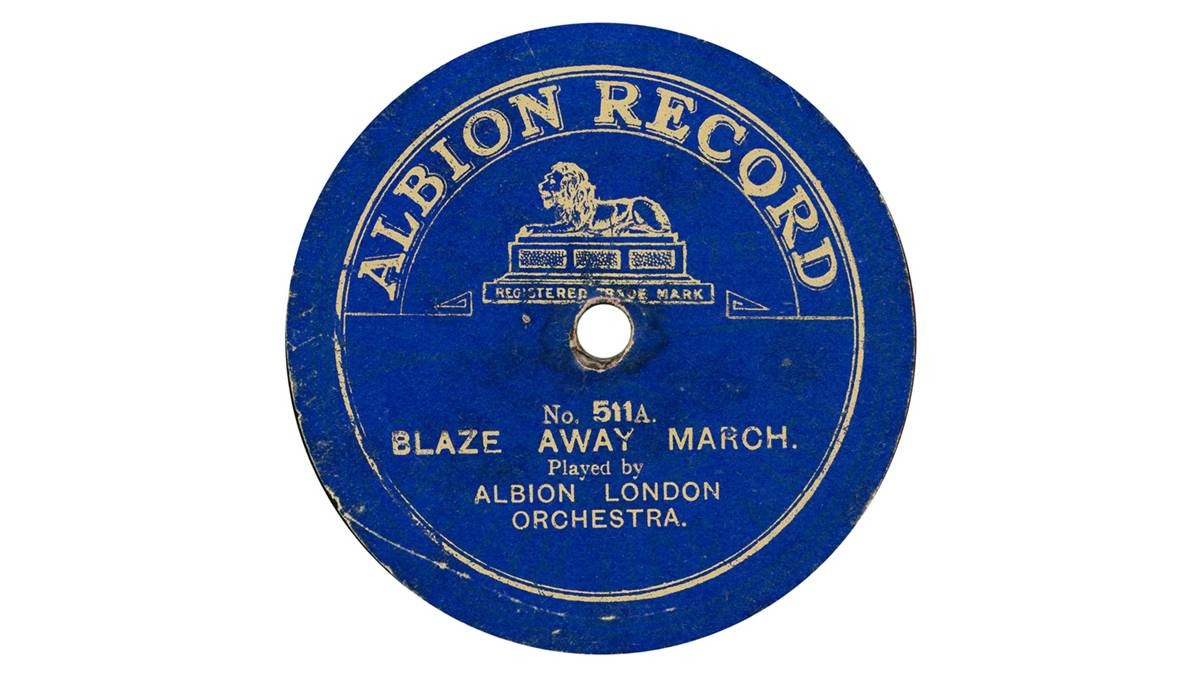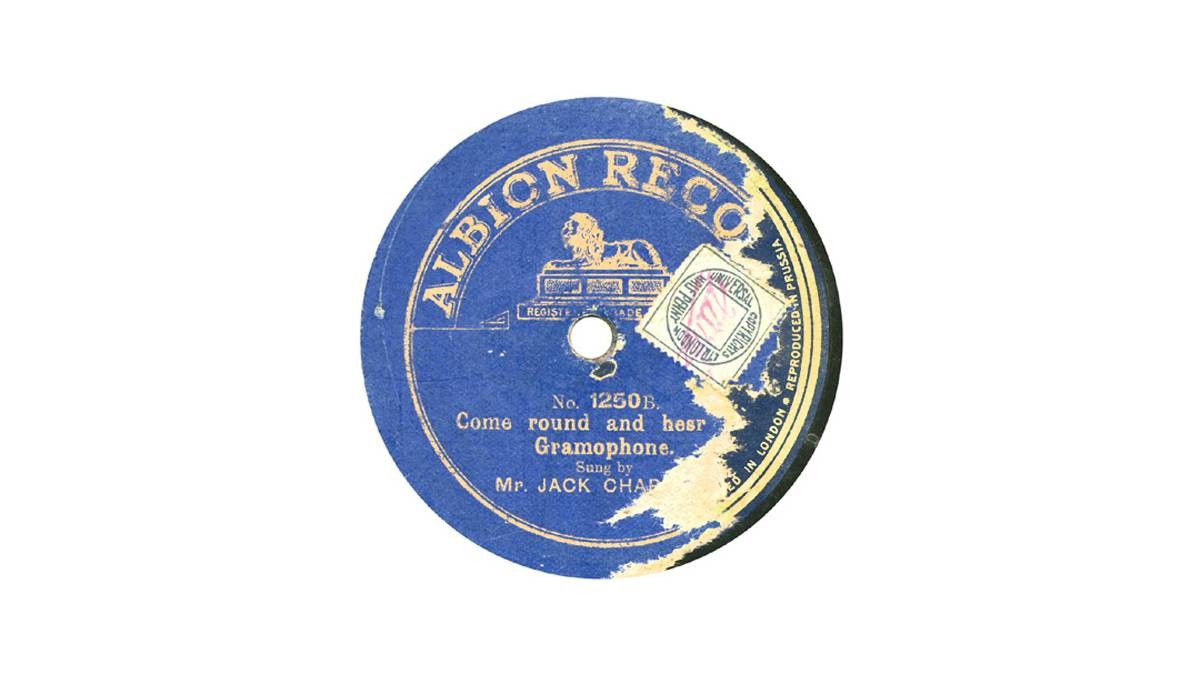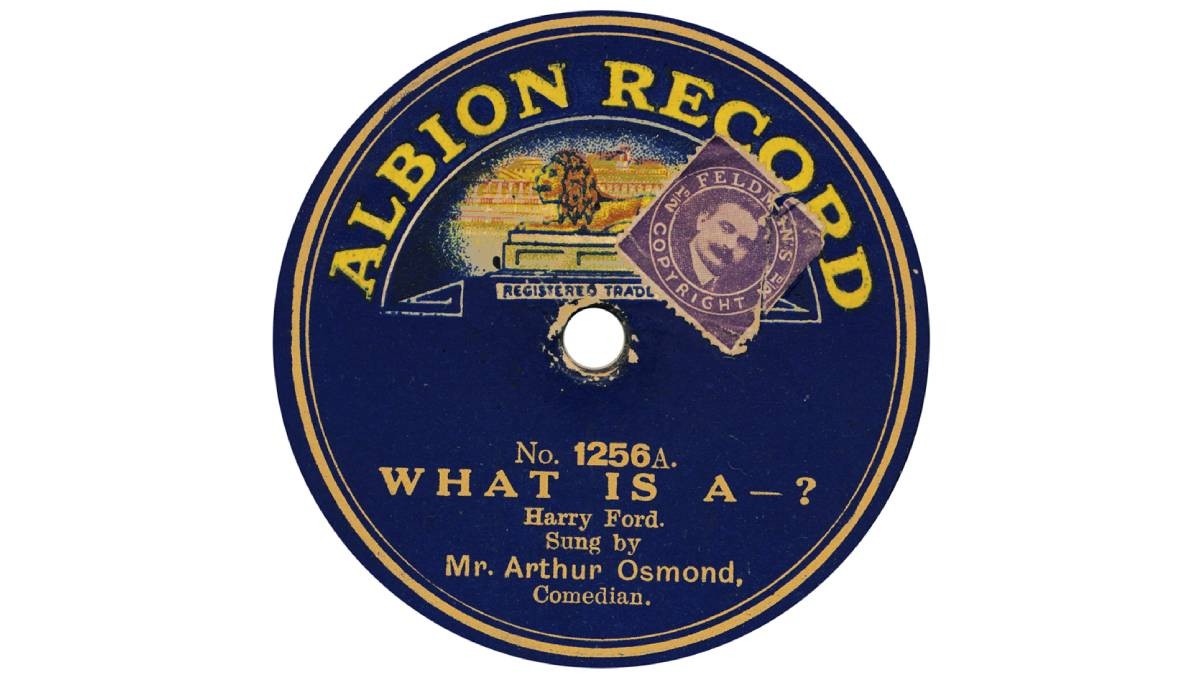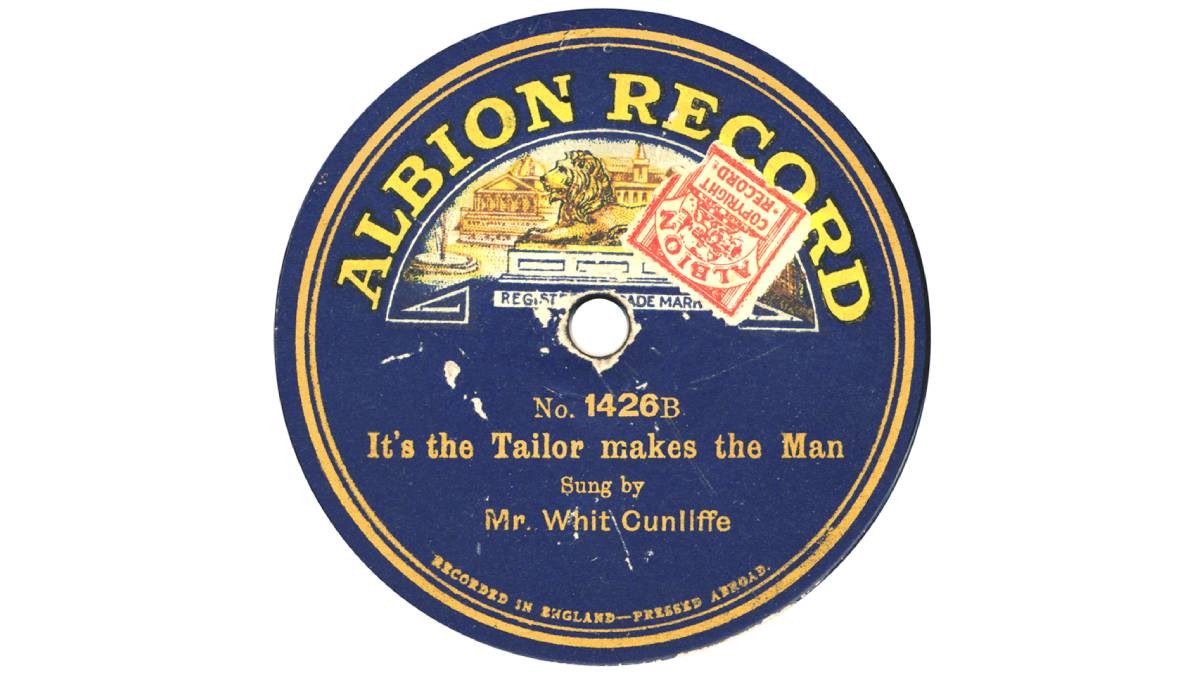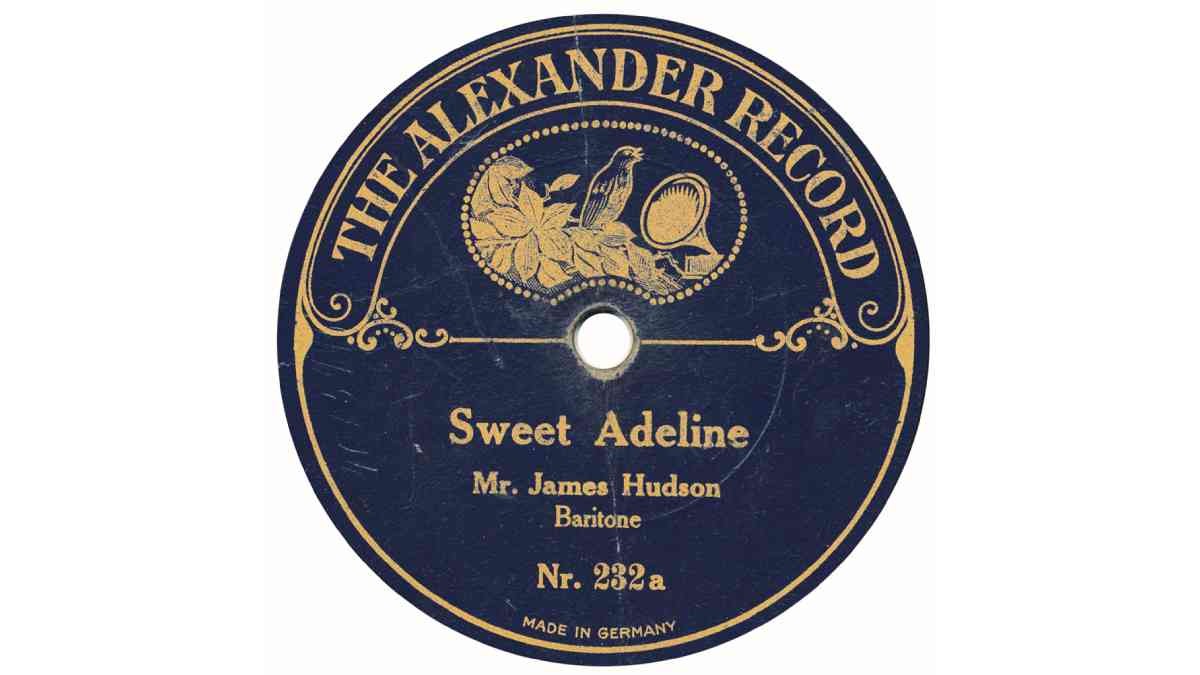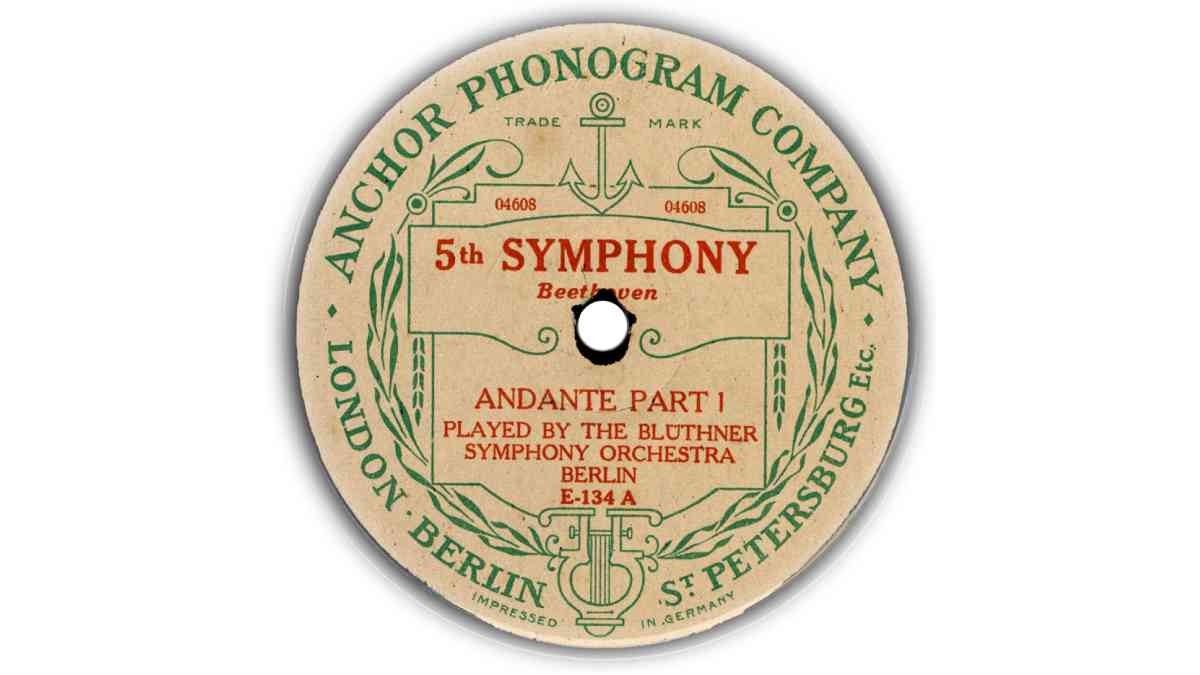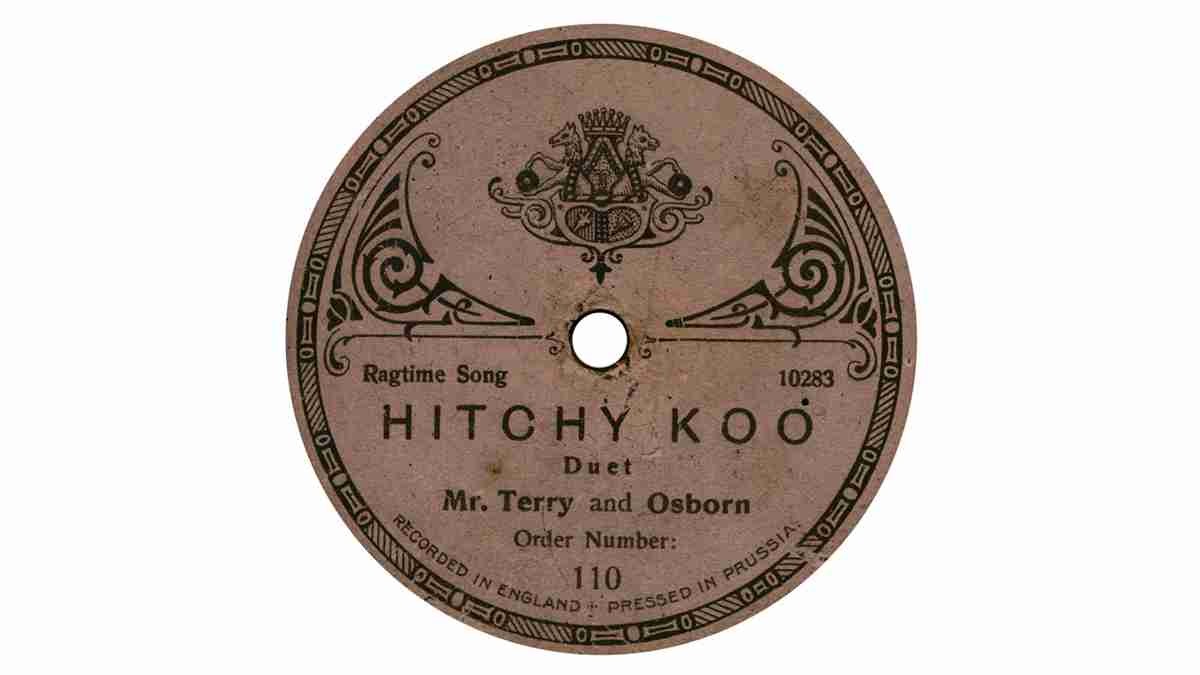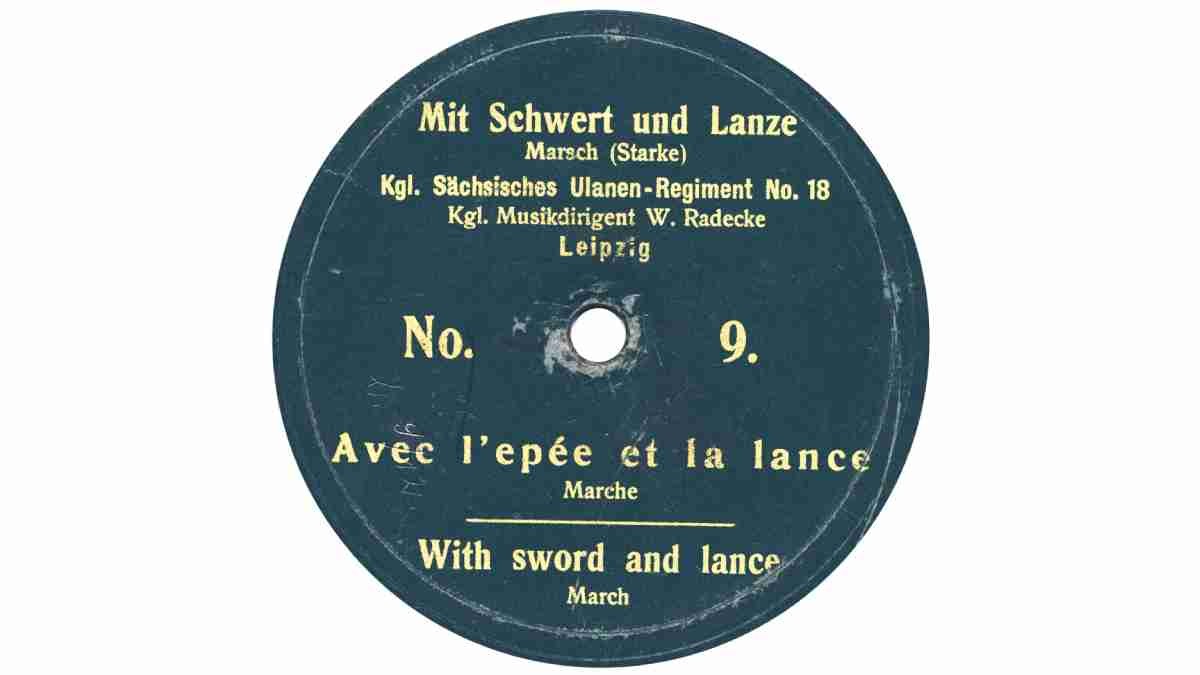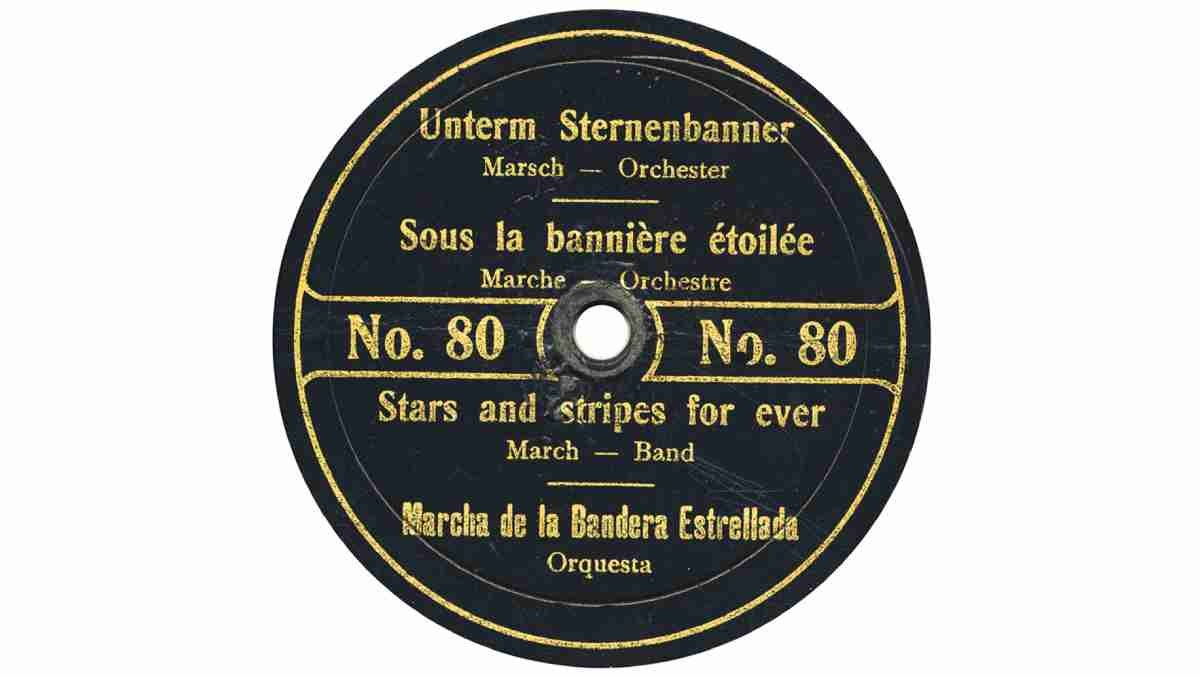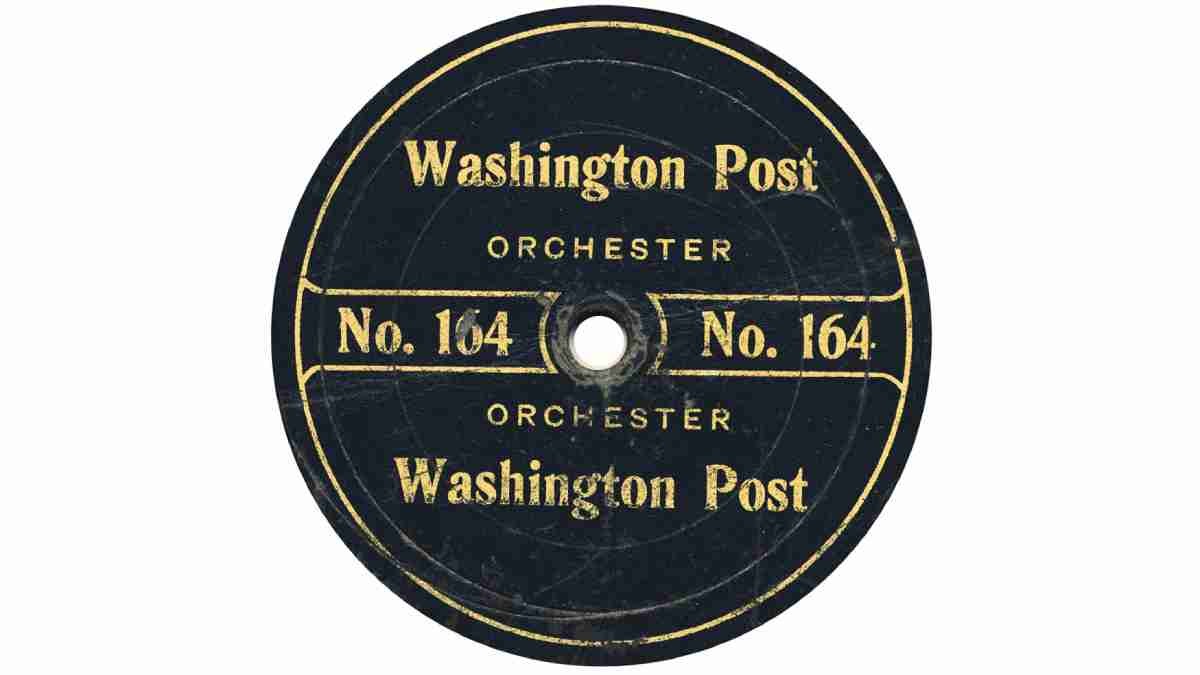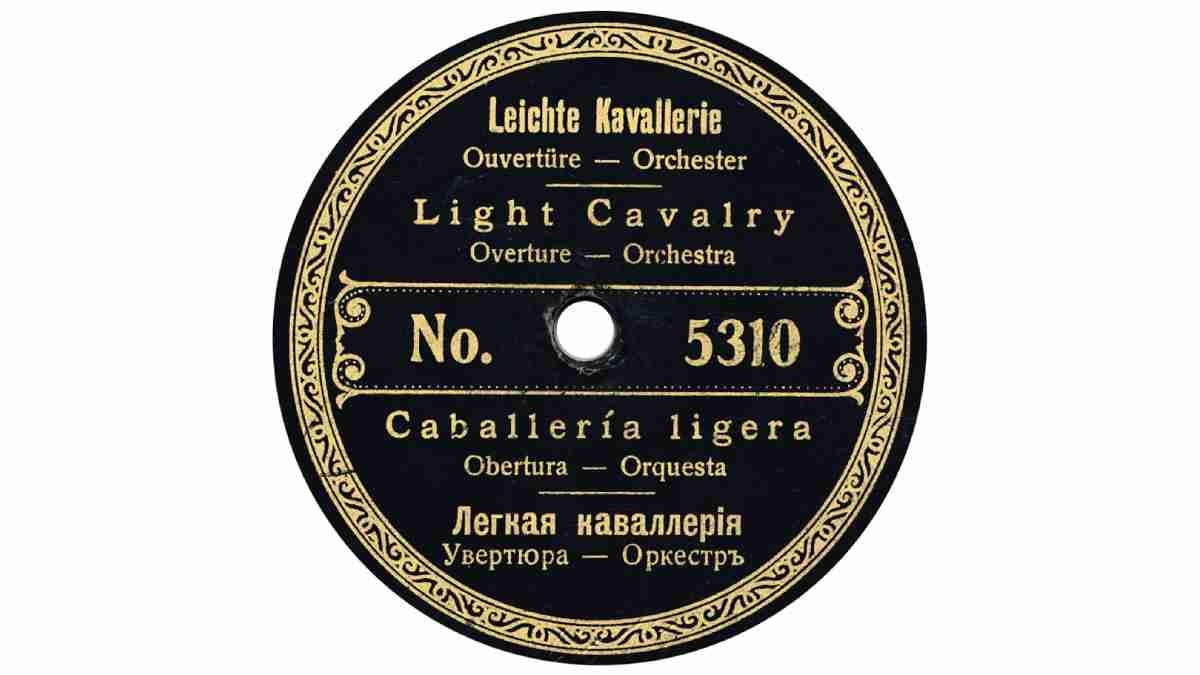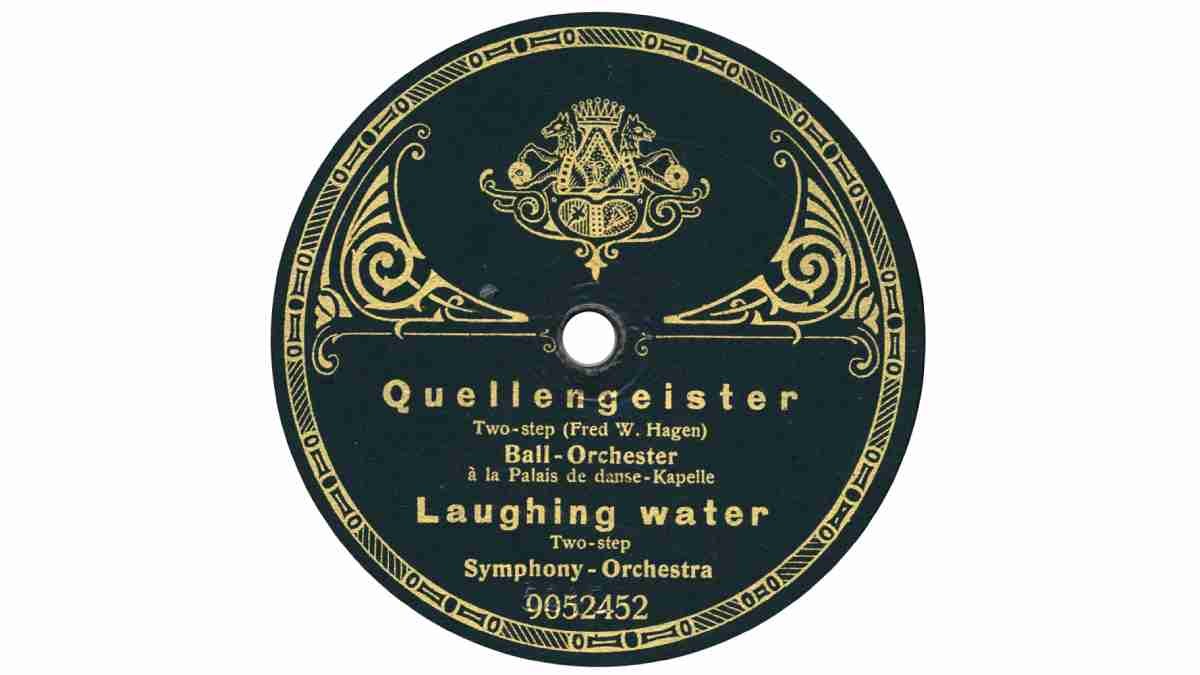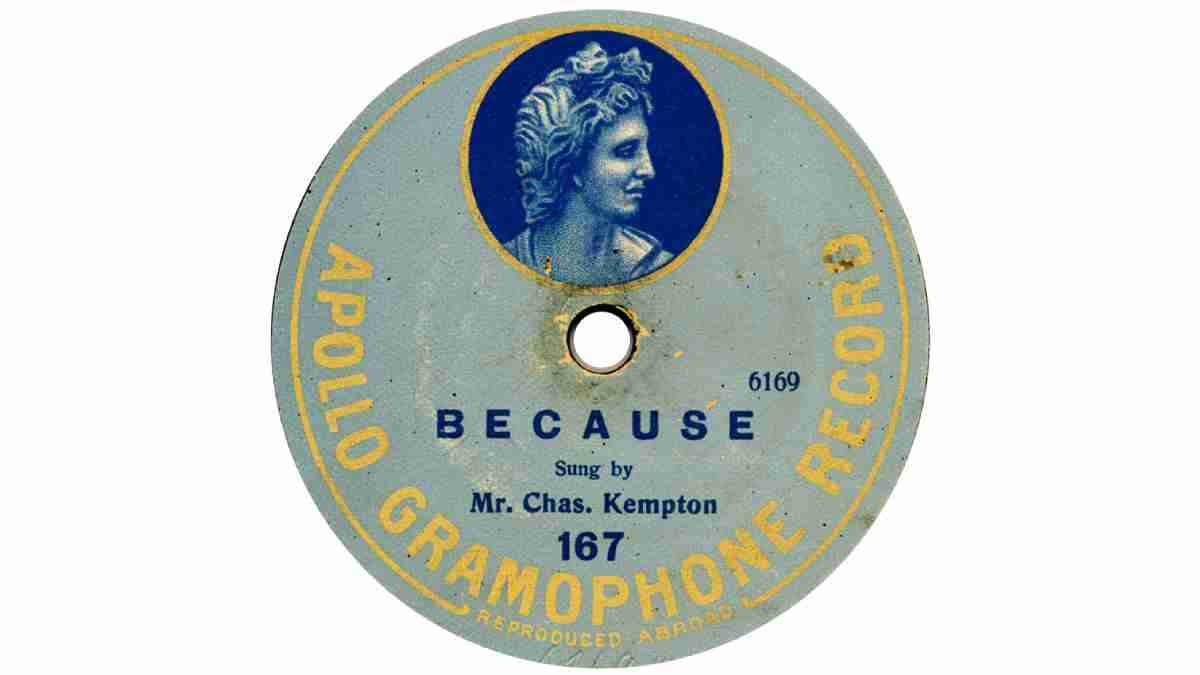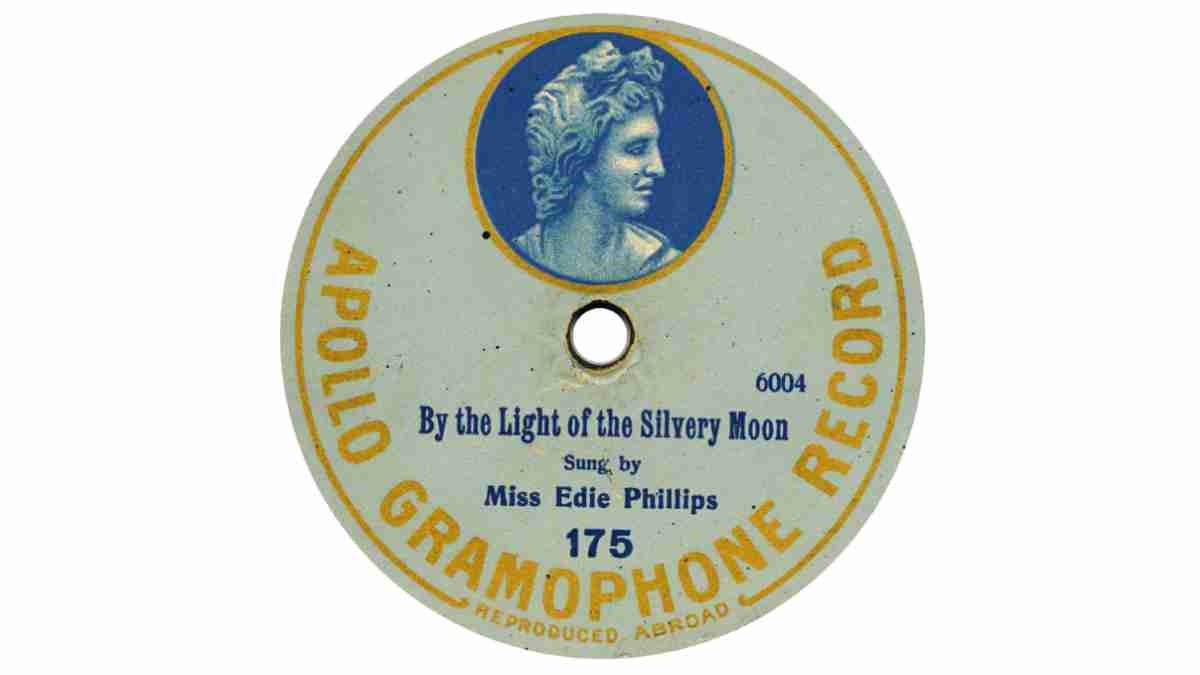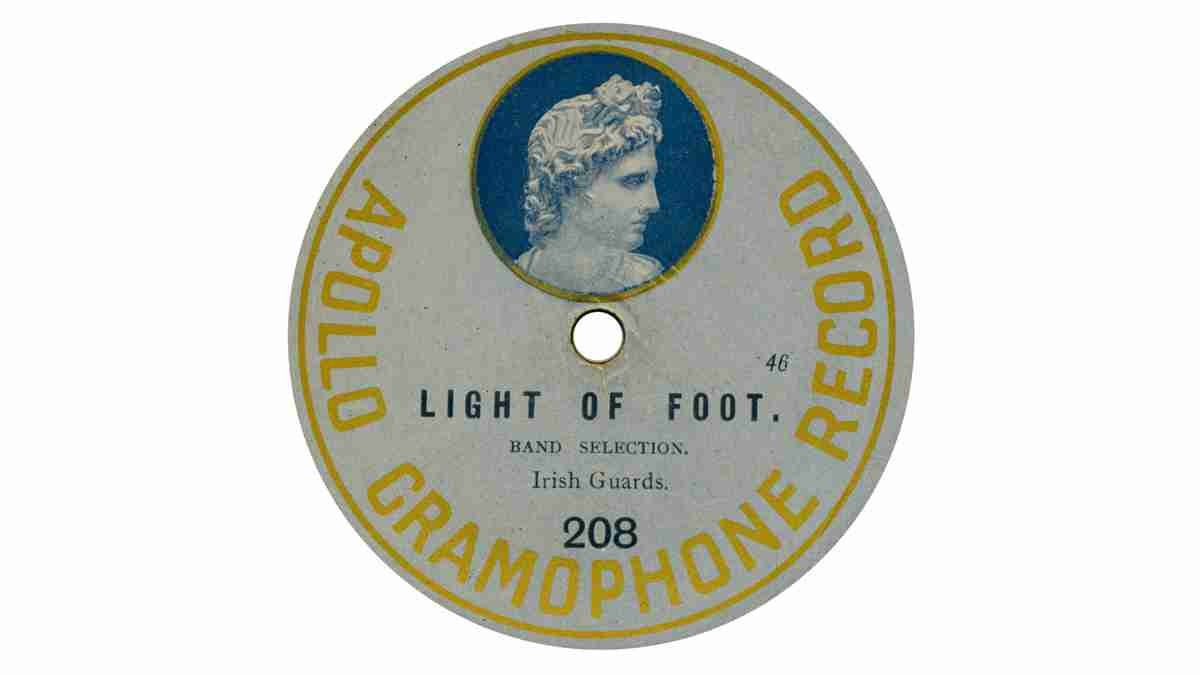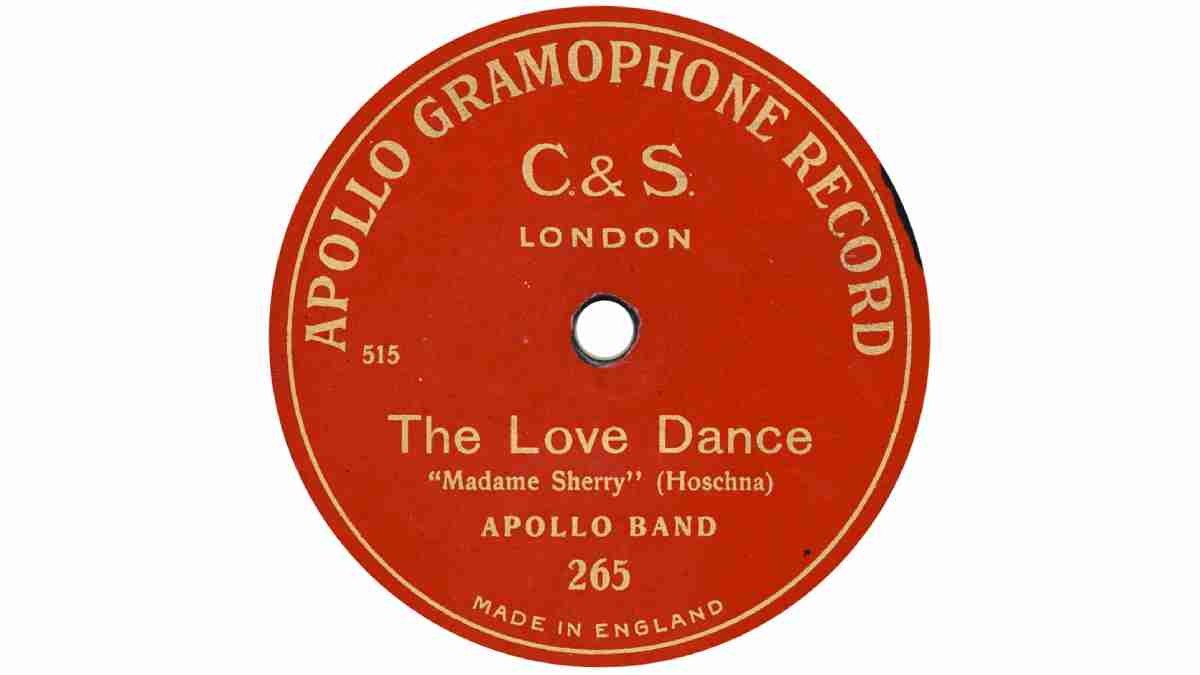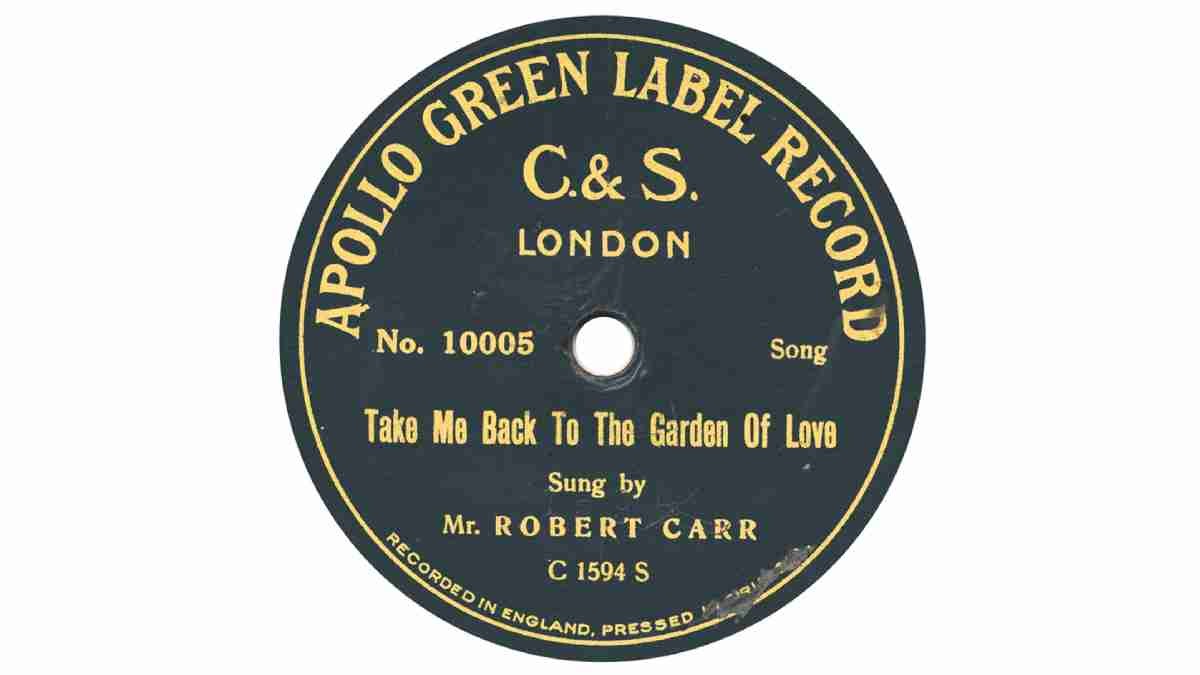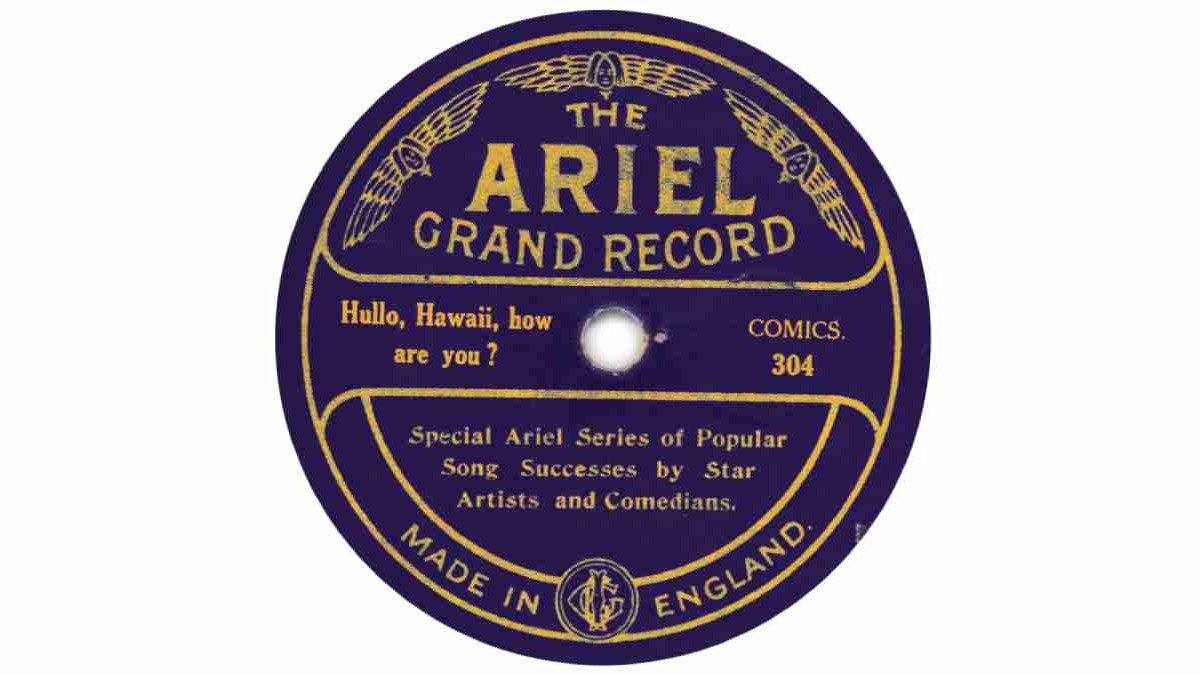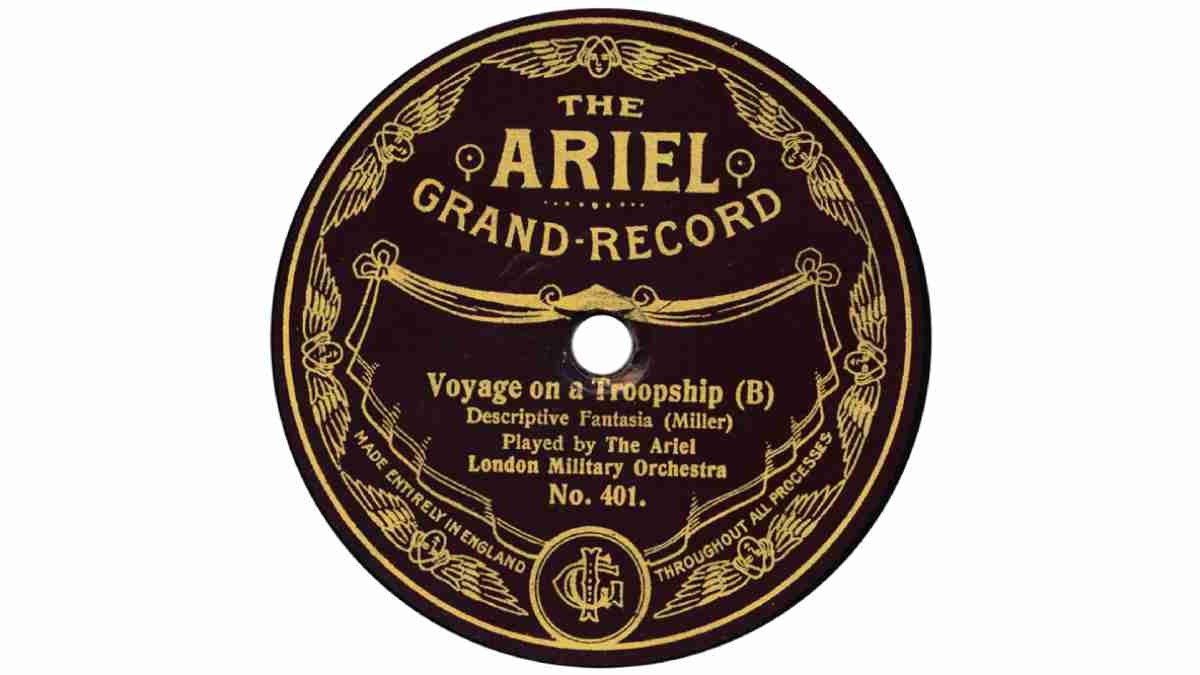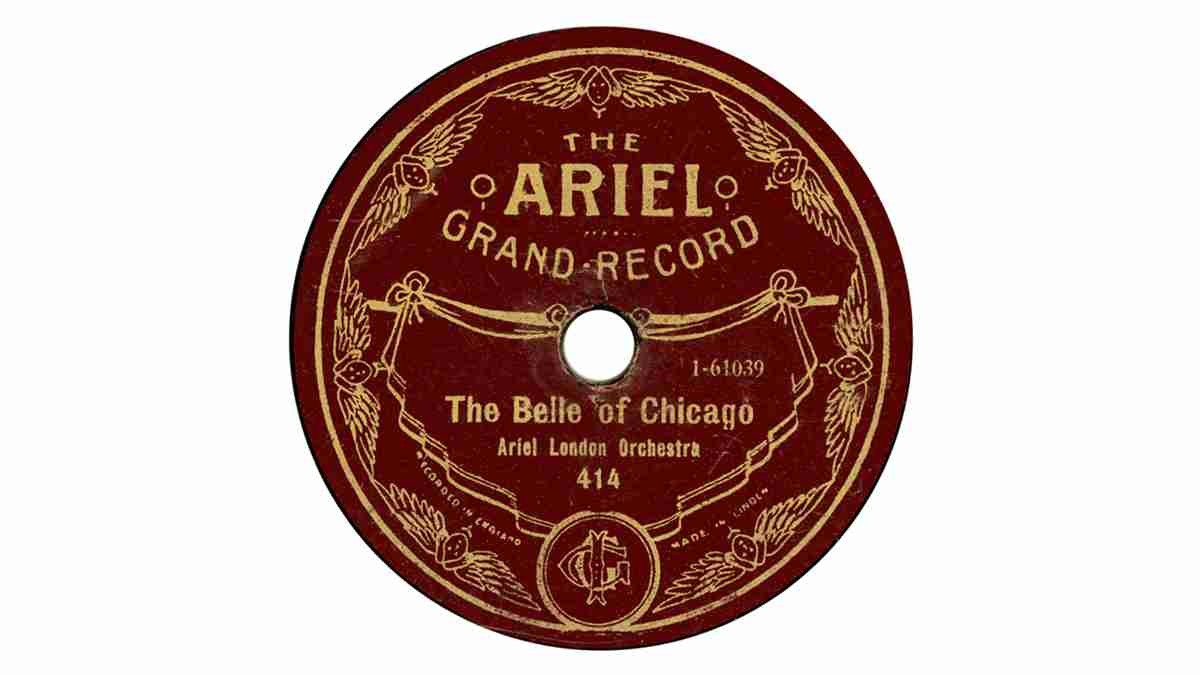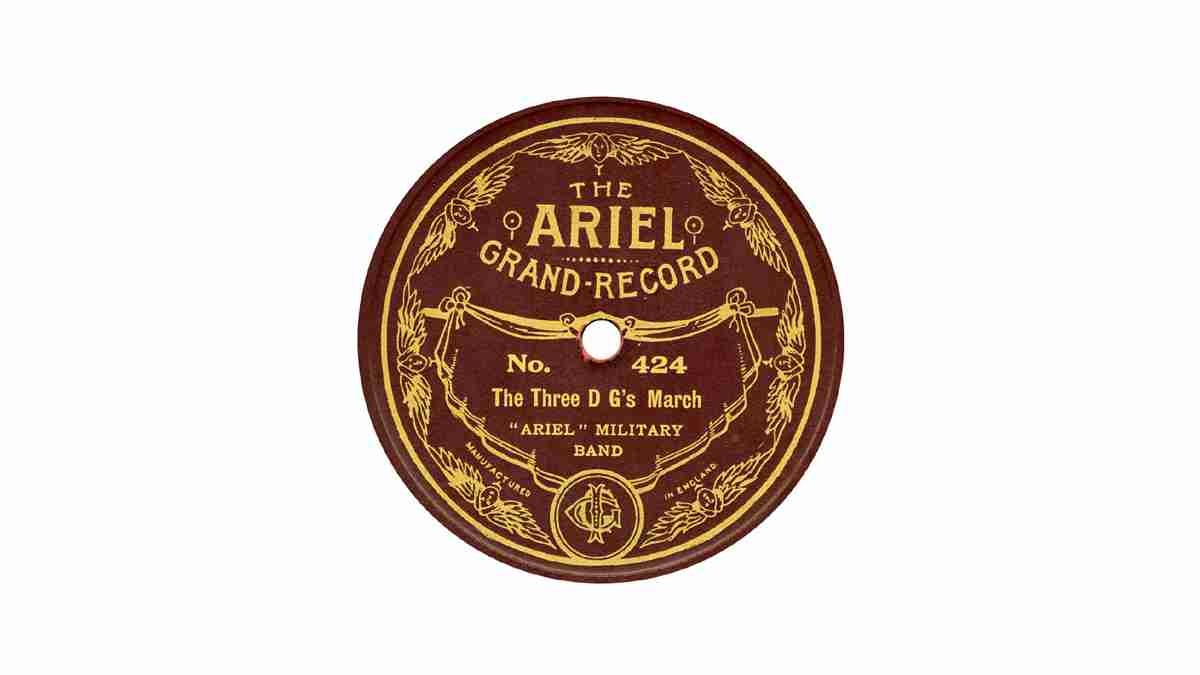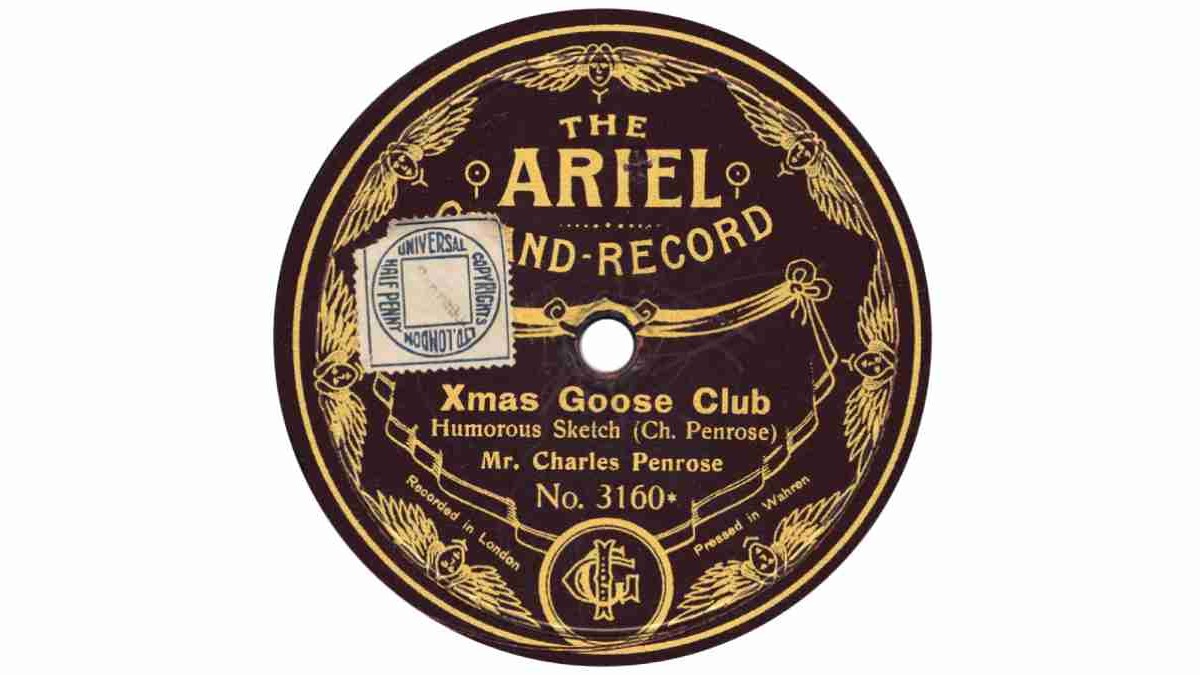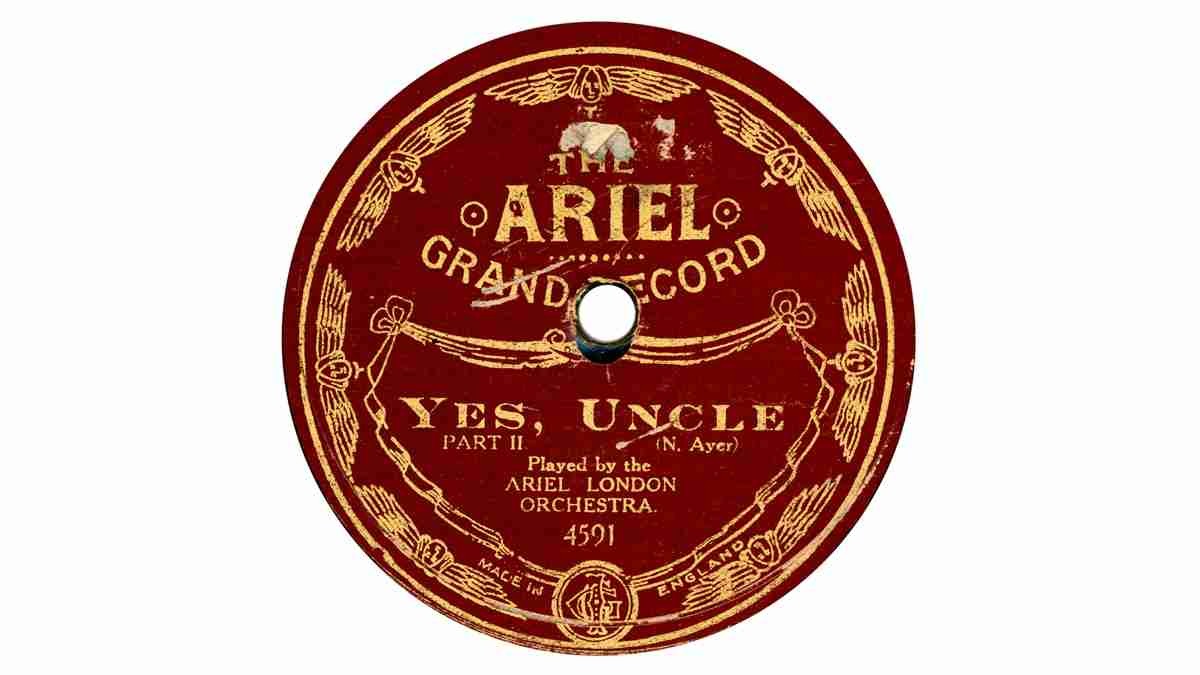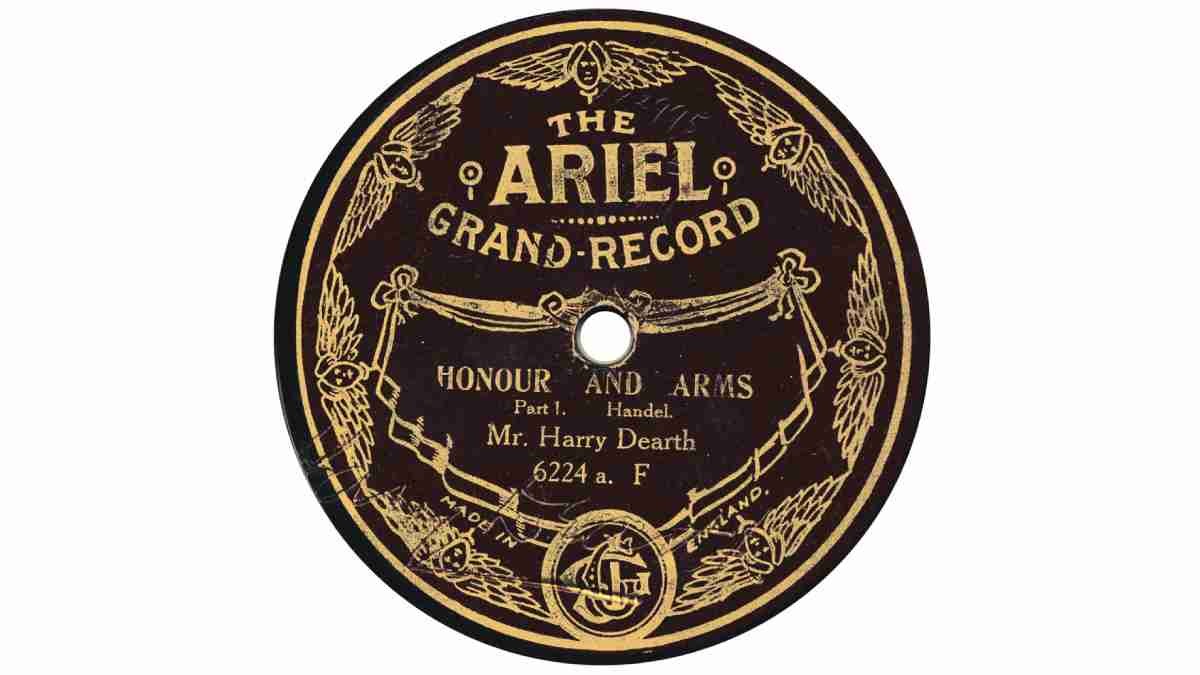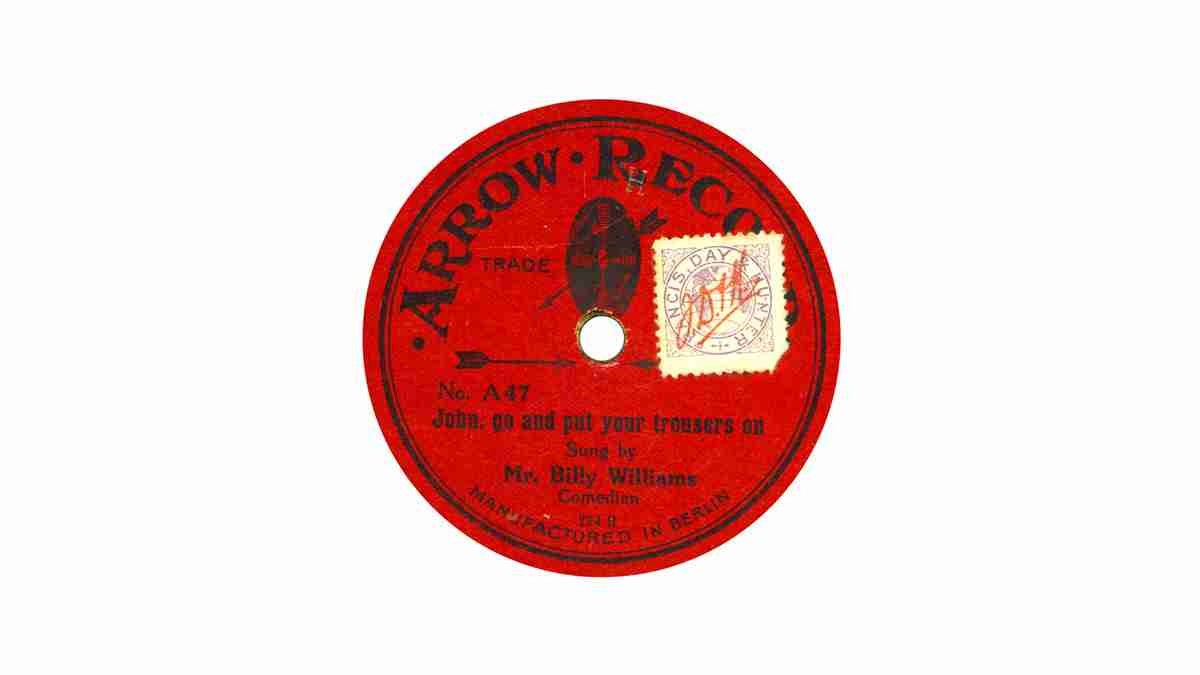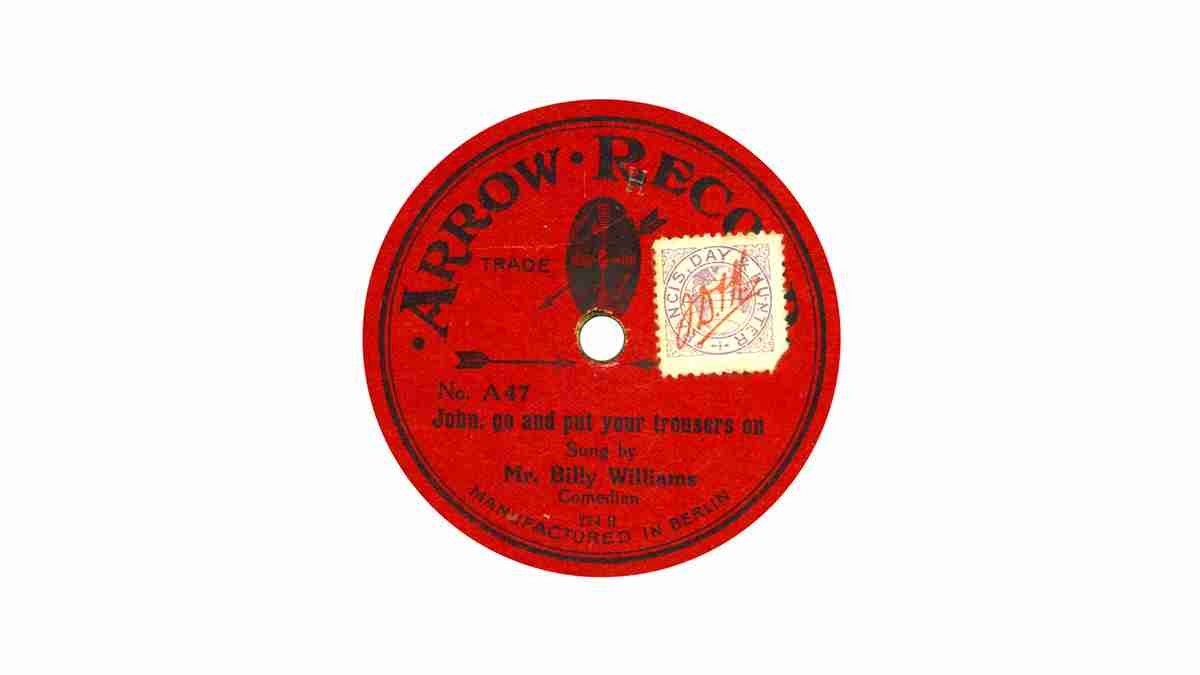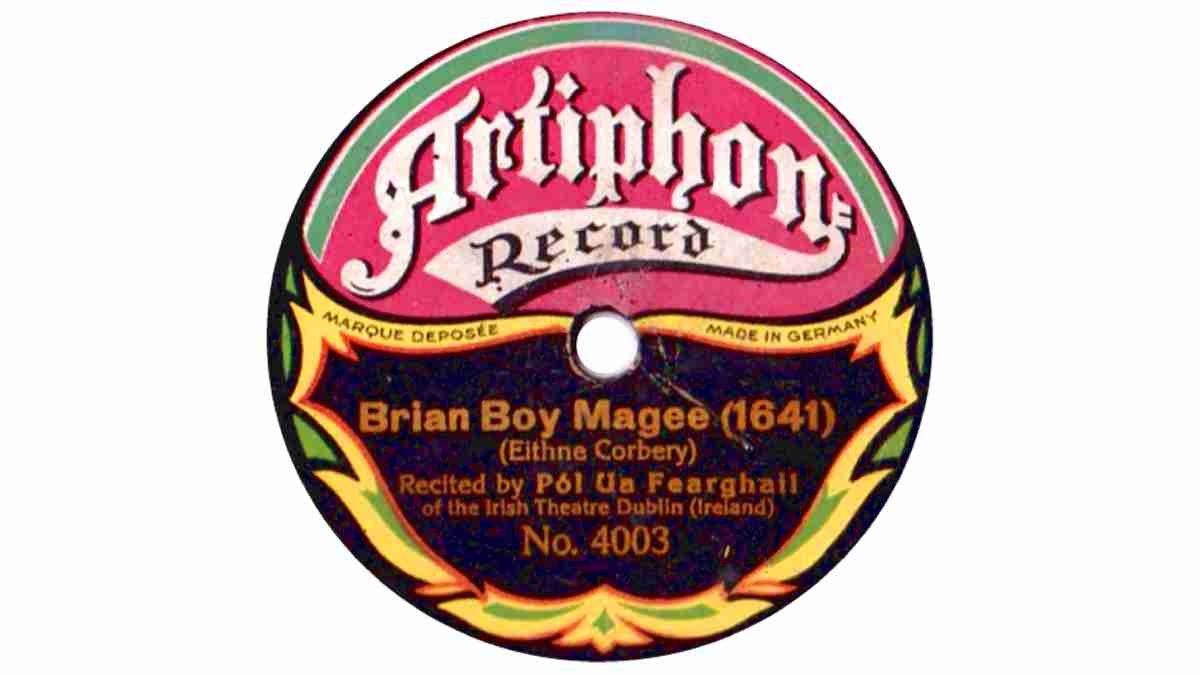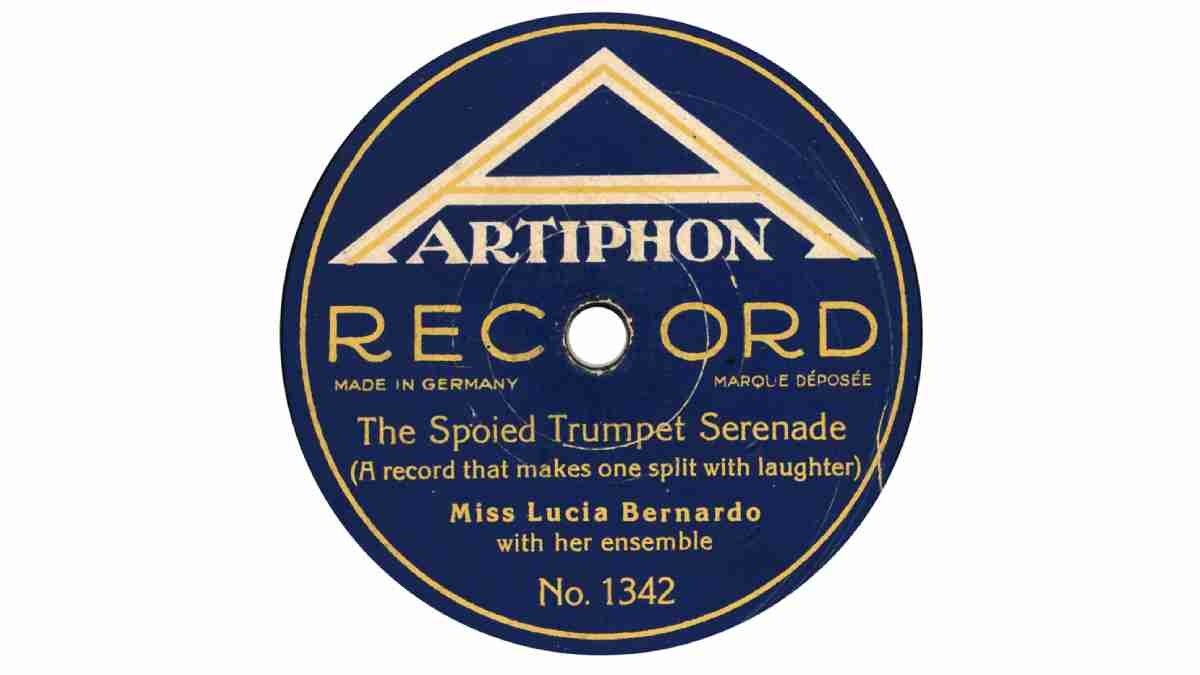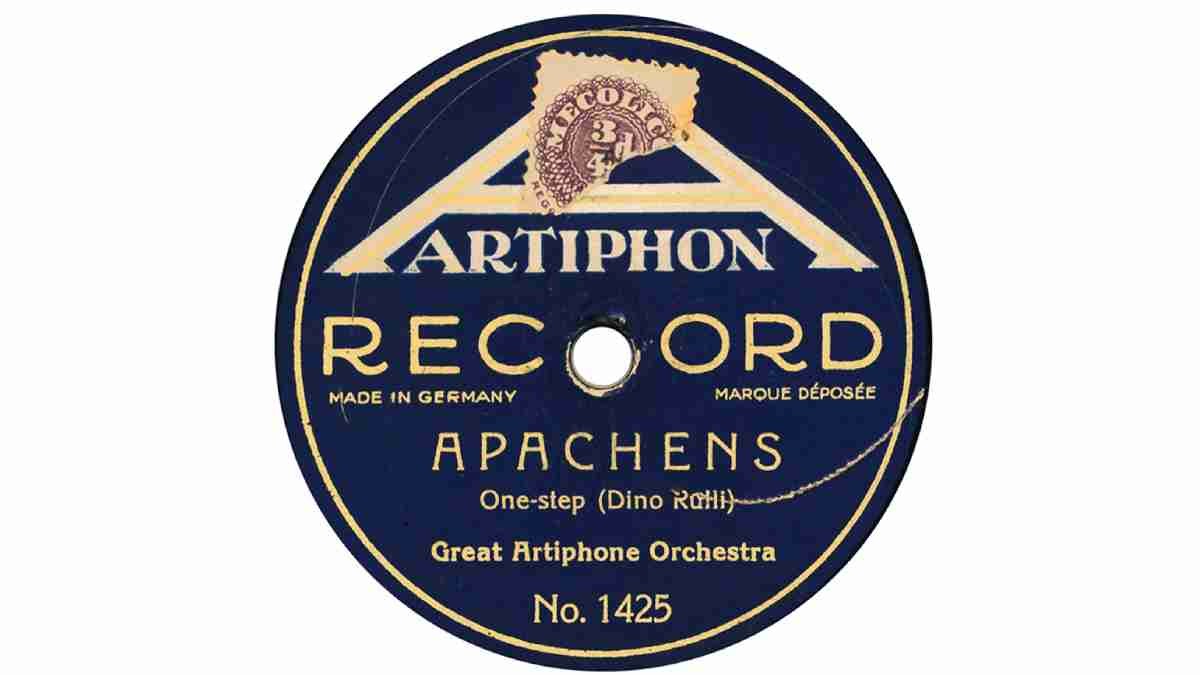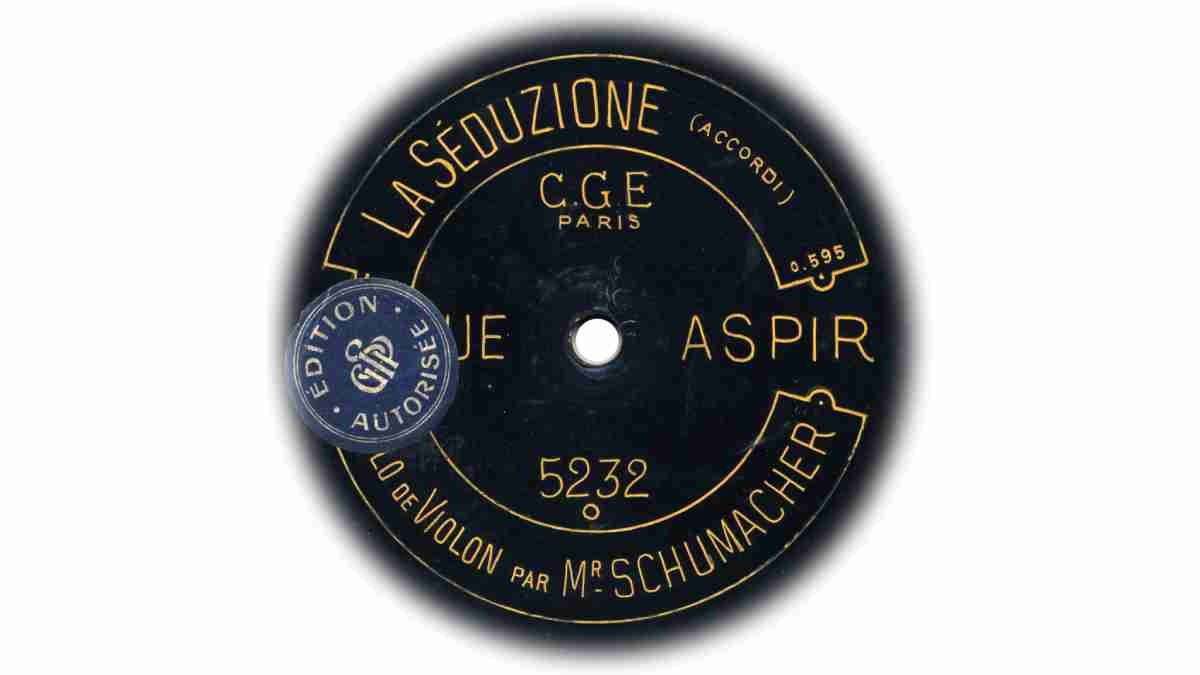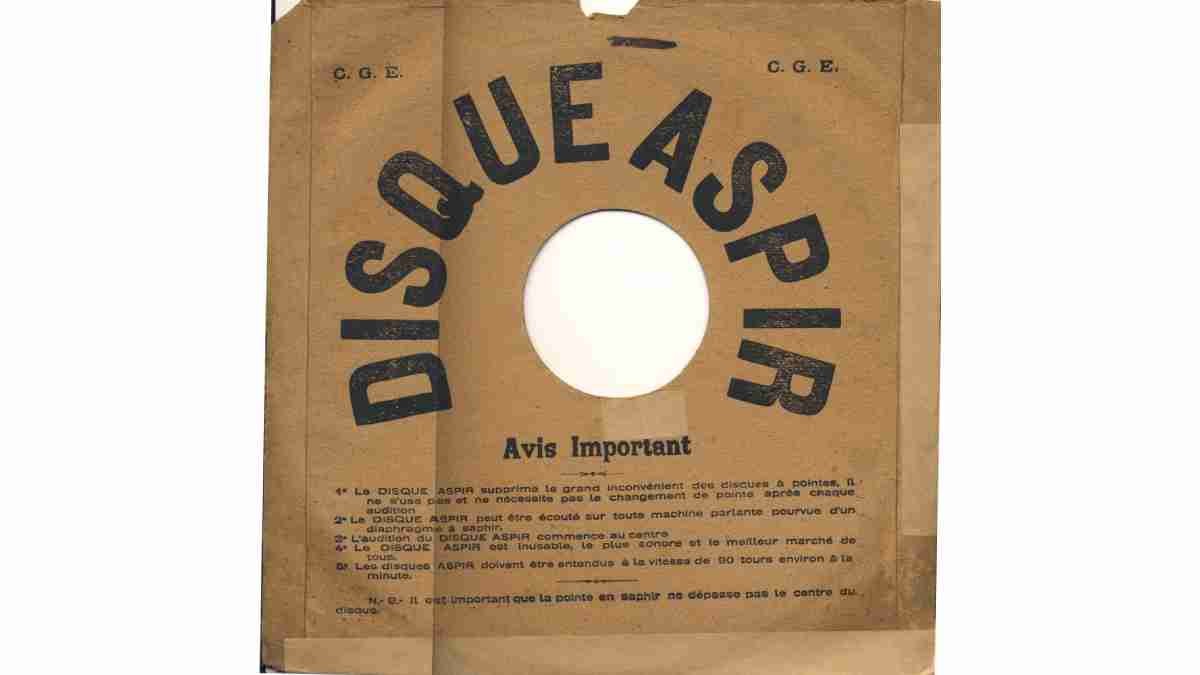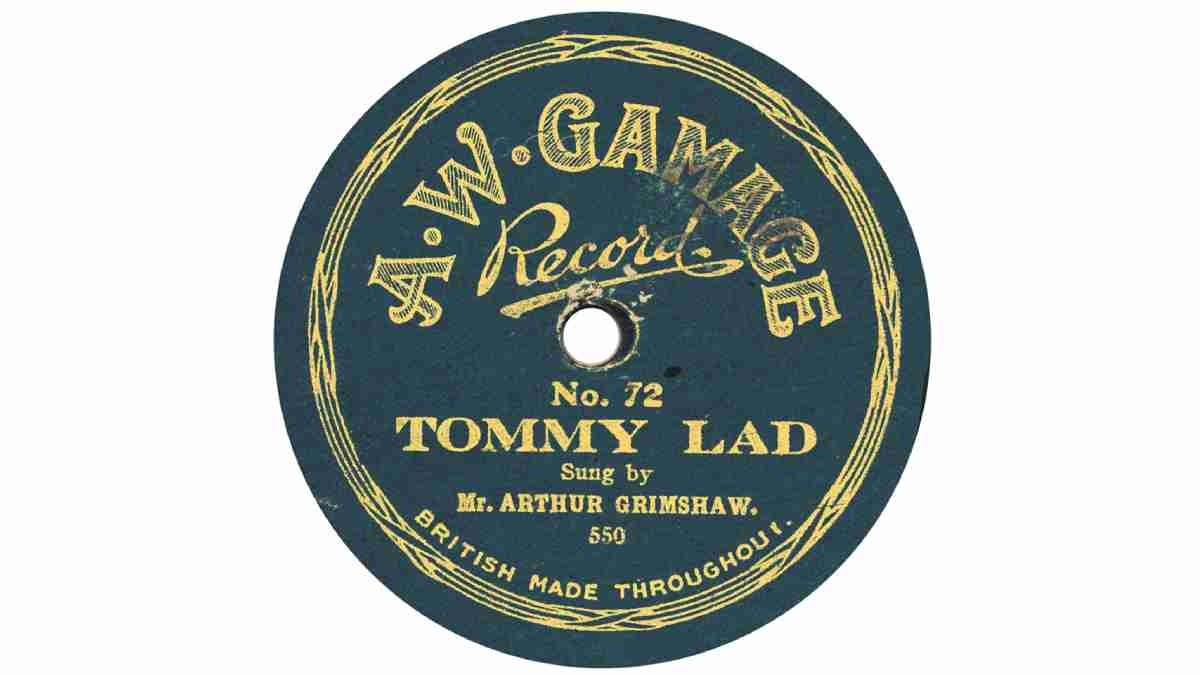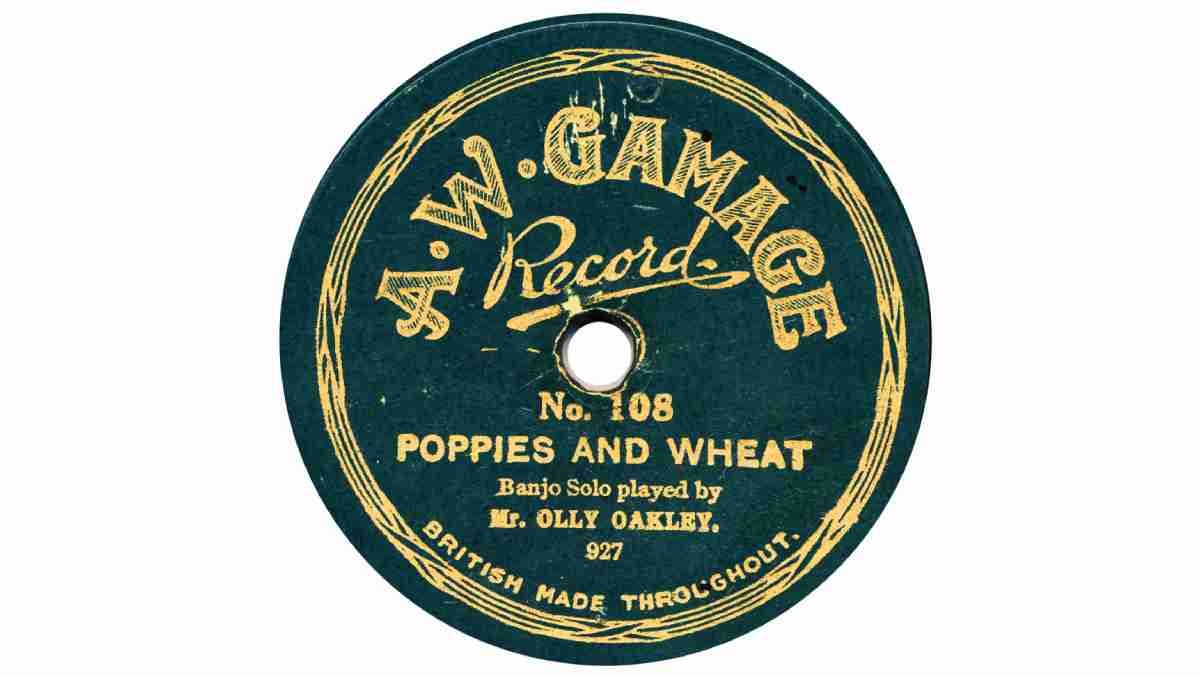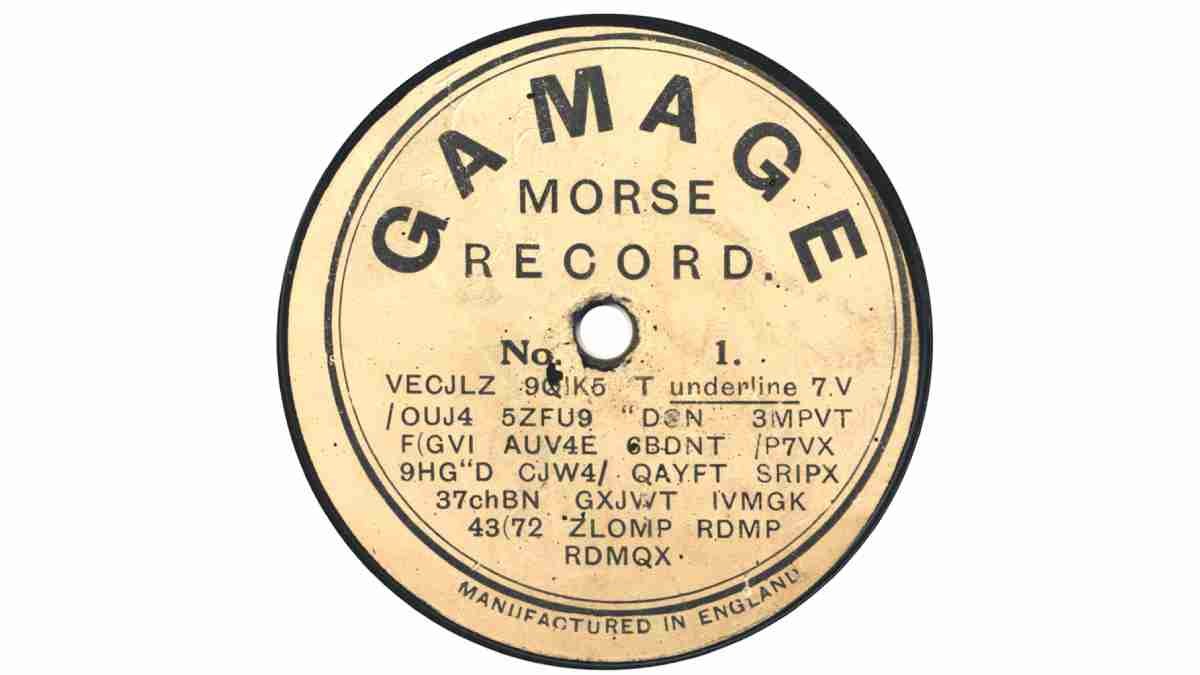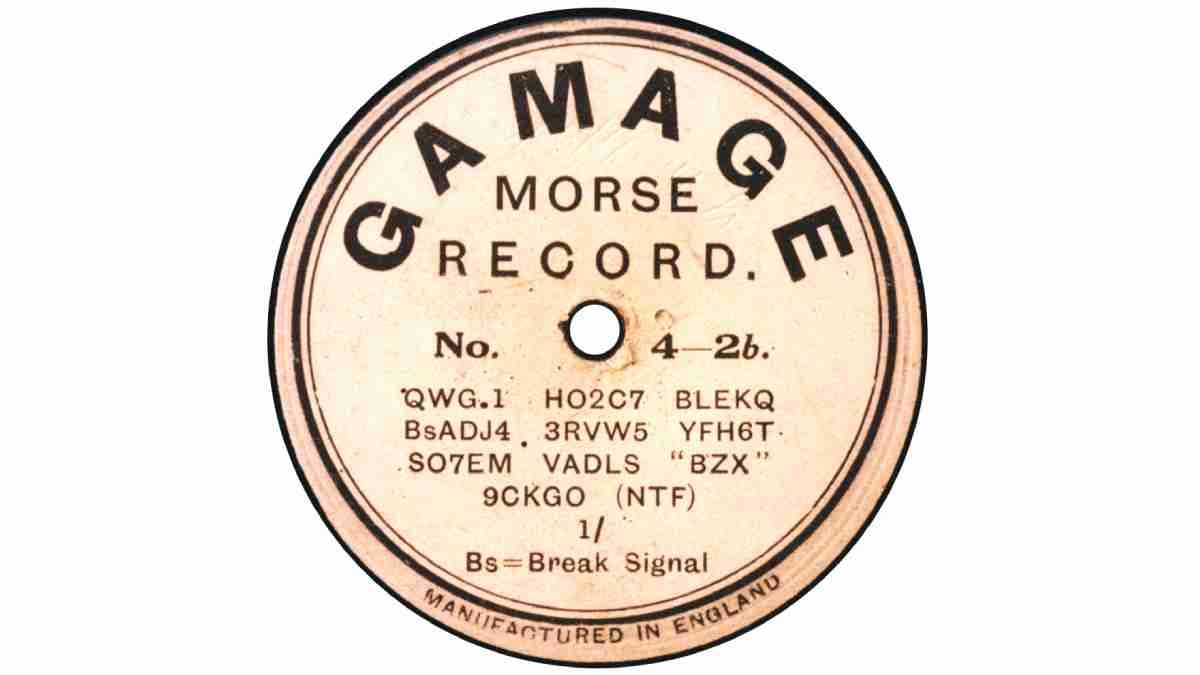
ACO
See Frank Andrews & Arthur Badrock, TMR 76, 77, 78, 1989-90. (The article was, in effect, split between these 3 issues). Collectors often loosely refer to ‘Vocalion’ as an umbrella term for 3 or more different companies, which I know caused Frank some distress, as he has meticulously recorded the history of all three. Originally there was the Orchestrelle Co. Ltd., which later ‘became’ the Aeolian Co. Ltd. Its records were pressed by a subsidiary company, the Universal Music Co. Ltd. at a factory in Hayes, Middlesex. The ACO trade mark was registered to Aeolian in July 1922. The first Aco discs appeared in November 1922. Mike Thomas has kindly furnished an early label example. Aco was in effect a ‘budget label’ to Aeolian’s high-prestige Vocalion marque. Aeolian had just bought up the Invicta Record Co. Ltd., whose label was Guardsman, and most of the first 40 or so Aco issues were derived from Guardsman masters, some of them quite old. The label continued until G-16230 in 1927, but does not turn up all that often. They also put out at least seventy-five 12″ discs in a F-33000 series. These are very scarce, and we are grateful to Roger Mackey for sending the above example. Just for the record, the Vocalion Gramophone Co. Ltd. was formed in December 1924, so only products after that date (they manufactured many other labels) really merit the loose term ‘Vocalion’.
Acutelle
The third volume of Mike Langridge’s monumental listing of British Pathé records covers the lateral cut discs – principally Actuelle. Go to the CPLGS website to get your copy.
Also see Frank Andrews & Arthur Badrock, TMR 78, 1990. Also FA on Pathé. Hitherto, the disc products of the venerable and important Pathé concern had always been vertically cut – disque à saphir – from the sapphire ball stylus used to play them. But after the Great War, it became plain that a ‘normal’ lateral cut record was needed. The U.S. branch of Pathé registered the trade mark ‘Actuelle’ in 1919, lateral discs appearing there in September 1920. British Actuelle discs duly came out in September 1921, with ‘Needle Cut’ on the label – disque aiguille. They had several catalogue series. The normal ‘popular’ series above began at 10101, and continued out of our time period, until December 1928, over 1,400 issues having been made by then. Incidentally, the cream & green centre of the first label is highly unusual; it is the only one I have ever seen in the 10000 series. All acoustic Pathé master records were in the form of cylinders, not discs. They were dubbed pantographically into either lateral form (as here) or vertical, as required – vertical cut Pathés continued to appear in the country for several more years after 1921. Many quite early masters, dating back well before the War, appeared on Actuelle. See also Pathé.
Adelphi
Made for an unknown client, these discs were pressed by The Universal Music Co. at Hayes, Middlesex (often loosely known as ‘Vocalion’) from masters deriving from Aco, U.S. Vocalion, and perhaps other related sources. The only trouble is, they are so scarce as make their evaluation very difficult. The few known have numbers in single or low double figures; so probably only a first release was made, and nothing further happened? However, the G-series control numbers they bear can give us a clue to their date. Adelphi 13 bears G-1780, which is a very high number, and that series was abandoned in May 1926. This gives us a ball-park date for the appearance of this first (and only?) batch of Adelphis. (Adelphi 11 has G-1648 and G-1649, which fit well.) In addition, the ¾d copyright stamp indicates a retail price of half-a-crown, 2/6d, or 12.5p in current terms. ‘Mighty HMV’s’ popular series records were currently only 3/- (15p). Moreover, the above Adelphis are both acoustic recordings, while HMV’s had been made electrically for some time. I think we may reasonably conclude that the public didn’t find Adelphis very good value for money?
Aeolian
See Vocalion
Aerial
These were produced for an unknown retailer or wholesaler, by the Duophone Syndicate. They are very scarce, but must date from around 1926 or even possibly 1927, at which time most labels had gone over to electrical recording. So few Aerial records have turned up, that their evaluation is difficult. There may be electrically-recorded material on the label.
Aérophone
See Len Watts and Frank Andrews, HD 108, 1979. In September 1911, Aérophone discs were imported from Paris, and sold from premises at 50 High Holborn, London. Apparently both vertical and lateral cut discs were made. The first one above is 10.5″ and is lateral cut. We do not know what cut the second one has; or which type was imported here. Perhaps both? Neither is it known for how long they were available. What is certain, is that not many can have been sold – they are very scarce.
A.F.M.C.
The Anglo French Music Company was founded in 1916 by Tobias Matthay and John McEwan to produce piano music, graduated to assist the progress of students. By 1923 they were also producing discs. These appear to have been recorded by ‘Aco’ and pressed at the Universal Music Co’s factory at Hayes, Middx. See pianosage.net for more information on Matthay. The pianiste Desirée MacEwan worked at Matthay’s School, specializing in teaching the piano to children.

AGA
Frank Andrews Archive. AGA records were introduced in 1909 by the Aga Schallplatten Vertreib (= distribution), of 45 Bahnstrasse, Schöneberg, Berlin. It was a period of very rapid expansion; labels were proliferating, and often drew from the same pool of masters. Material recorded in London came out in a 5000 catalogue series. The control numbers, confusingly, also ran in a 5000 block. Many sides also appeared on Ilco, Bel Canto, Sound Wave, and probably other elusive labels of that ilk. It is a confusing period; small companies came and went quite quickly. AGA was no exception; it went into voluntary liquidation on September 25th 1911. The scarcity of their discs in the U.K. speaks for itself…

Agincourt
Thanks to Mike Atkin, a new label has been rediscovered after about 112 years! Klingsor records appeared here in 1910. They were made in Germany by Polyphon, who at that time had no direct outlet into the U.K. Klingsor records ‘went with’ Klingsor Gramophones. However, in due course, October 1911 to be precise, Polyphon entered the burgeoning British disc market in its own right, so Klingsor had to yield. Remainng stocks of Klingsors were obviously ‘jobbed off’ – but to whom? The overstuck ‘Agincourt’ label enabled somebody to sell these changelings. But who they were, will probably remain forever unknown.
Albion
Albion discs were around from about 1911 to December 1914, when the company went into liquidation. There are two basic designs with the coloured label. 1256 has the small coloured insert, with a not very imposing lion. It also has the scarce Bert Feldman ‘portait’ copyright stamp. This was in contravention of the Copyright Act – no images of any individual were permitted, so they were soon withdrawn. 1426 has the larger design with a more impressive lion. They usually carried Beka material, but Odéon-Jumbo masters are known, indicating they may have been pressed at the Lindström-Beka factory at Hertford. Note that we have labels which indicate (a) no place of manufacture; (b) pressed in Prussia, and (c) manufactured in England! The two plain blue labels are pasted over German-made discs. The John Bull concern was bought up by Albion in late 1913, and their labels were stuck over remaining stock. The Beka paste-over probably originated after the outbreak of war in August 1914. Records which said ‘Reproduced in Prussia’ on the label would have been unsaleable, and thus jobbed off to have other labels pasted over. (Having said that, Beka discs had been pressed at Hertford for some time before the war; the Linsdström labels continued until 1916.)
Alexander
See Frank Andrews, HD 214, 1997. The proprietors of this scarce label, Frank tells us, must have been the Alexander Record Co. of Birmingham, Chester, Coventry and Manchester. He also suspects it might have been a ‘tallyman’ operation – see John Bull and Meloto for an explanation of this. They were pressed in Germany by Polyphon and Beka, with the Polyphons probably coming first, beginning in 1910-11: e.g. 20399 above. The end-date of the label is unknown, but the tallyman operations faded away in 1913-14, owing to the increasing number of cheap labels which came in at that time; so the Alexander Record would have been been short-lived.
American Odeon
A comprehensive and detailed history of the Odéon company and a listing of all early Odéon records exists. “British Odéons” by Mike Langridge. 312 pp A4. Pub. CLPGs Bookshop on behalf of CLPGS Ltd. Wells next the Sea, Norfolk. 2006. Visit the CLPGs Bookshop for details. The company history was written, naturally, by Frank Andrews.
This qualifies as a British label in that they were sold here – imported, as the label freely informs us. Dating from 1905-1906, they were a product of the American Record Company. These discs were ‘adopted’ by Odeon for sale in Europe. They were pressed in a rich, resplendent blue material, and are superbly recorded – listen to this fine cakewalk record. Alas, the ARC were driven out of business due to infringing U.S. Patents, presumably held by Victor and Columbia, who were operating a mutual (but otherwise exclusive) sharing of certain crucial patents. These discs are very scarce, even in the U.S.A., where they have the same excellent label simply titled ‘American Record’. A batch of ARC masters were subsequently shipped to the U.K. and appeared on various minor labels here, such as Pioneer.
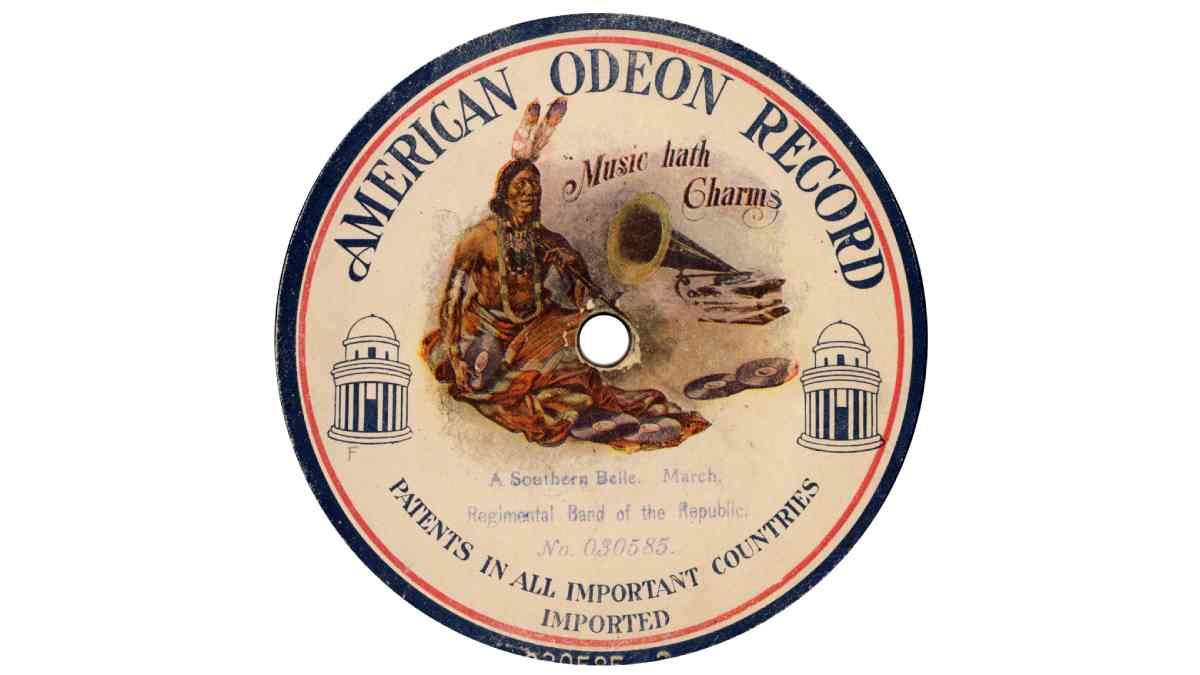
Anchor (Anker)
Anker was a German company. The first disc is titled in no less than five languages, and it must be assumed that there was an intention, or at least an option, for their sale in any or all of the countries speaking those languages. The Belle Fields (recorded in Berlin, December 1907) is titled largely in English, so the same may be said to apply.The third clearly seems to have been intended for the British market, and must pre-date 1914 (St. Petersburg). We assume that there is a connection between ‘Anchor Record’ and ‘Anchor Phonogram Co’.
Anonymous or 'No Name' Records
A curious and uncommon species. They also have a tendency to bear multi-lingual labels. Mostly made in Germany, they might have been intended for extremely general distribution, where the retailer (and probably his clientele, some of whom could probably not read in any case) cared little or nothing for a brand name, and happily settled for anything that was cheap & cheerful. Another possibility, suggested by Bill Dean-Myatt, is that some discs of this type may have served as ‘travellers’ samples’, played by a company rep. to demonstrate the quality of their product to merchants who wanted their own label. ‘Your name here!’ they would have said, indicating the blank space on the label. One of those above has a German AMMRE copyright stamp – but in the early days of such stamps it was quite common for the royalty to be paid in the country of manufacture rather than the country of consumption. We have assumed that any label titled in English was – or might have been – intended for sale here. Dr Rainer Lotz kindly informed us that the discs with logo of two horses holding records were a product of the German Turmaphon company. There is also a quadrilingual label in German, English, Spanish and Russian – this, the product of Globophon (Dr Lotz). The coupling (80/164) is odd, in that one side is titled twice in German; while the other side is quadrilingual in German, French, English and Spanish! All these may be dated ~1908 – 1914.
Applaudando
See Bill Dean-Myatt, FtR 76, 2020. A British trade mark was registered in February 1912 for the Applaudando record. Made in Germany by the Schallplattenindustrie GmbH of Halle, near Leipzig. The British agent was H. Hadden & Co., Bedford Street, Strand, London WC. The amount of trade done must have been vanishingly small, as hardly any copies are known; indeed, of the two quite different label images in FtR 76, one (if not both) were furnished by Dr. Rainer Lotz, the distinguished German discographer. Thus, it is even possible that none ever actually arrived here? One has a black label with gold printing & is titled in four languages, while the other has an exotic pictorial antique middle eastern design. Though titled in German, the recording is the ‘Zampa’ overture, by the band of The Royal Horse Guards (The Blues), London. Bill pointed out that the ‘Zampa’ by ‘The Blues’ appeared on Victory Record A-76, issued in August 1913, masters 1045/1046. These are Joseph Blum masters, and while recorded in London, his labels (he had several) were originally manufactured by Kalliope, in Germany. Kalliope were located in Leipzig – and Halle is only 20 miles from Leipzig. There had been an enormous ‘bust-up’ between Blum & Kalliope; so it is conceivable that the ‘Blum Masters’ were being used (or disposed of?) by Kalliope? A long shot – but a tempting one. 8^)
Apollo
See Frank Andrews, HD 213, 1996. Apollo records were first advertised in December 1910. The proprietor was the firm of Craes & Stavridi. There are two sorts of what we might call the ‘cameo’ label. The first two were made in Germany by Globophon. These bear masters in a 6000 series, suffixed ‘KV’, which almost certainly stands for Karl Vogt, an early recording expert – thanks to Dr. Rainer Lotz for pointing this out to us.This 6000-KV series appears on several other British labels (Festival, Globophone itself, Eclipse and Playwell-Regent), and appears to be a distinct British series made in London by Vogt. The second type was manufactured here by J E Hough Ltd – in loose terminology Edison Bell – from their Bell Disc masters. Over 300 issues were made from these sources. The red-label Apollo discs were also made from Bell Disc masters. None of these masters were made later than 1912, for the Bell Disc label ceased in that year. Frank attributes the Apollo Green Label record to July 1913. These were pressed from masters belonging to Blum & Co. which were kept in Germany at the Kalliope Co., who pressed this final style of Apollo. Supplies would have ceased in August 1914. Note that a patriot has gouged out ‘Prussia’ on the green label – quite a frequent occurrence after the outbreak of the Great War. Though they produced no more records, the Apollo Gramophone Co. continued to trade in the same field; in 1930 they were offering the Paillard turntable with its innovative electric induction motor.
Apollon
See Frank Andrews, FTR 3, 2002. The International Record Publishing Co. Ltd. was registered in September 1907. Craes & Stavridi (see Apollo above) were both directors. In October, recording expert Sidney Taylor was in Athens recording Greek and Turkish material for the new label, called Apollon. Finished discs were ready as early as December 1907. They were presumably sold in this country and possibly exported too? Frank states that the company ceased trading in 1913. The records had red label with gold printing, a figure of Apollo appearing to the left of the centre hole, the titling being on the right – a fairly unusual design for the time. Frank thinks they might have been pressed at the Inverness Works in Hounslow, Middx., or perhaps by ‘Edison Bell’. In any event, they must be very scarce.

Ariel
See Frank Andrews, HD 182, 184, 1992. Frank’s wonderfully detailed investigation & explanation of Ariel records is excellent, and a ‘must read’; no effective summary is possible. It was a long-lived ‘major minor’ label, existing from about 1911 to 1937. Made by various suppliers for J G Graves, the mail order warehouse in Sheffield, they sold extensively, possibly because they were available on the ‘easy payment’ system. Consequently, Graves had to write off quite a lot of bad debt, but nevertheless he was a generous benefactor to the city of Sheffield. The fundamental design of the label hardly changed in 27 years; but the purple is a scarce colour (and design) variant. There is a blue version, also scarce. All the discs above date from ca. 1911 to ca.1921. Happily, from about 1924 Parlophone was the only supplier. Frank tells us that the rare 12″ size in the 8000 series contains 3 separate blocks. 8000 was devoted to material from Beka (as above); 8400 for Favorite masters and 8600 for Odeon (as above). Ariel records (with the exception of the 12″) still turn up today.
Arrow
See Frank Andrews, HD 214. Arrow Records appeared in late 1913, as a cheap line of the Scala label, though Scala continued. The proprietor was Otto Ruhl, who had been involved with the introduction of Beka records in 1905. He was a ‘merchants agent’, and his trading address was the same as Lindström and Beka, at 77 City Road, London. (Lindström had taken over Beka some years before). Rather obviously then, the source of the masters was Lindström/Beka, whether they were pressed in Berlin, or at the Lindström factory ‘The Mead Works’, Hertford. Considering that the label was short-lived, many thousands must have quickly been sold, as they still turn up occasionally. All Arrow records were made from pre-existing masters; there are no original recordings on the label. They may still have been in production as late as 1916; that was the year the Lindström factory was confiscated by the government, since it was essentially a German company. Notice that there are labels which state: ‘Manufactured in Berlin’; ‘Manufactured throughout in England’ (i.e. made after the outbreak of the Great War in August 1914), and one type which does not admit to being made anywhere. 8^) Notice that A-28 has had ‘Manufactured in Berlin’ inked out by an indignant patriot.
Artiphon
Apparently the Artiphon label came into existence in Germany, shortly after the Great War of 1914-1918. A returnee from the old colony of German East Africa, brought with them considerable funds, which they had managed to retain. They were advised to invest this capital in ‘bricks and mortar’ or something else palpable, in view of the ever-increasing financial chaos in Germany at that time. They took the advice, and the Artiphon label came into being around 1919. The first image above was kindly sent by Michael Hayes. It is not actually a British label, but is included for its historical significance. It dates from 1922, a crucial year in the progress of Irish independence. To emphasise this, Irish Gaelic recordings were made, and manufactured by Artiphon in Germany. Truly, a disc such as this has history pressed in its groove. Artiphons were also made for sale in the U.K.: the other two images are from a single disc, and one side at least is titled in English. It also bears a British copyright stamp; and must, therefore, have been sold in this country. Artiphon clearly had their records pressed by Homophone, as they bear the letter and number codes we associate with that concern. The stamper date of this one is 19th May 1924. Whether a British company had them made, or whether Artiphone made them off its own bat for the English market, is not known. However, ‘The Spoied (sic) Trumpet Serenade’, (a laughing record) also appears on Scala Ideal, along with other masters quite possibly from Artiphon.
Aspir
See Len Watts & Frank Andrews, HD 108, also BRI. Frank informs us that the vertically-cut Aspir discs were imported here from France and put on sale in December 1909. They were manufactured by Établissements Phonographique d’Ivry for ‘C.G.E’ – the Compagnie Géneral d’Électricité. The British agent was a George Davis, who had already brought in Phoebus and Phono Disc (not to be confused with Phona-Disc) in 1908. The importation of Aspir ceased in 1911. They are very scarce.
Atlas
See Frank Andrews, HD 214, 1997. Otto Ruhl (see Arrow above) applied for, and was duly granted, a trade mark in the form of a figure of Atlas supporting the globe, for use in connection with gramophone records and gramophone horns. It was granted in January 1914. But Frank knows of no appearance of Atlas records; and that being the case, we can be pretty sure that there weren’t any. 8^).
Auto
At the 1905 Leipzig Spring Fair, a new disc record was launched by Auto- Record GmbH, in effect, a subsidiary of Beka. Single sided, 20 cm (~ 8″) in diameter and 6mm (0.25″) thick, they were extremely cheap at three-quarters of a Mark, about sixpence at the time (= 2.5p). The disc was cardboard with a thin facing of some plastic material, possibly a sort of celluloid, into which the groove was stamped. Beka records were first imported into the U.K. in November 1905, and the Auto disc was also mentioned in our trade press. However, it turned out that they had been over-confident about the durability of the Auto, so gave it up, and in 1906 ‘dumped’ the entire stock, 150,000 of them, on the German market. None came here – except possibly a few samples? We can always live in hope! 8^).
Autograph
See Frank Andrews, HD 214, 1997. This interesting – and very rare – label was sold by W H Reynolds Ltd., who were trade suppliers of talking machine spares & accessories. They had two addresses in central London. However, all Autograph records – and Frank believes that 33 might have come out – were by Billy Whitlock, the recording expert, xylophone/bells soloist, and comedian. They were first advertised in January 1914. They were from several sources: Beka, Dacapo, Favorite and Polyphon. The one above is from Favorite, master 6645-t-, face number 1-64079. The label bore the facsimile signature of Billy Whitlock, hence the name of the record. They were probably only around for a few months in 1914.
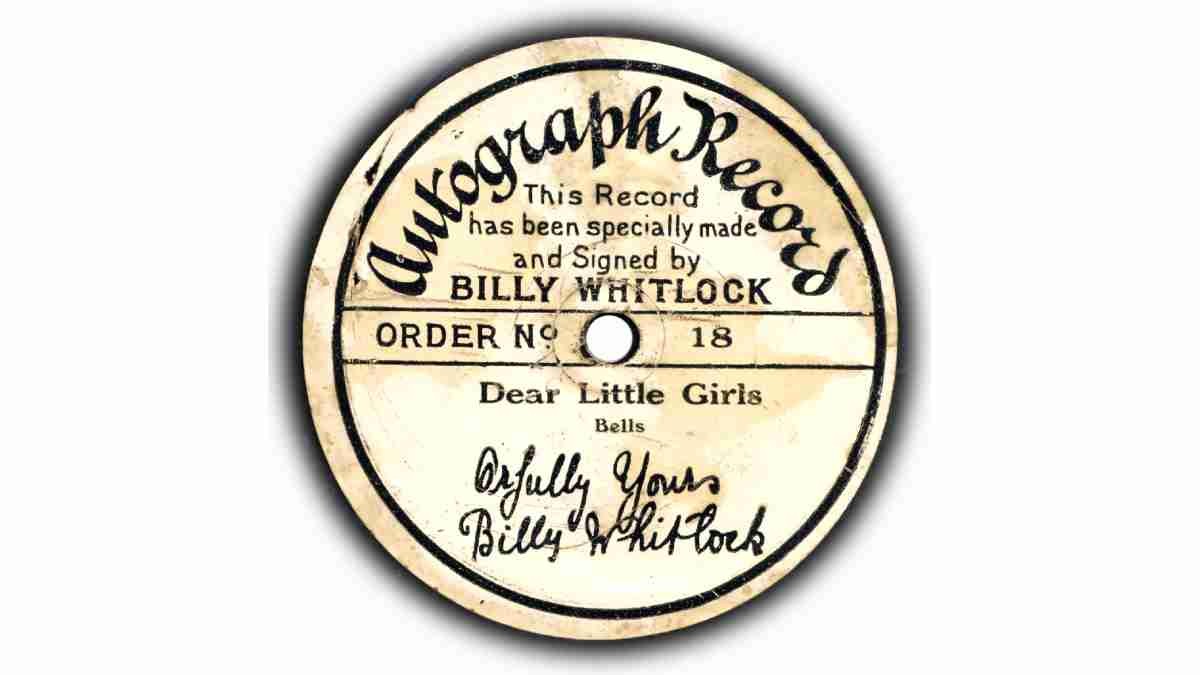
A.W. Gamage
See Frank Andrews, HD 182, 1991. See also ‘Champion – Gamage’ and ‘Gamage’. These London department store ‘A W Gamage’ records are thought to have appeared in 1914. They were made by the Invicta Record Co., from their Guardsman masters, and were doubtless pressed by Crystalate. Some Grammavox masters, which had appeared on Guardsman, also went onto A W Gamage. These required a 10.25″ disc to accommodate them, and so are distinctive. 108 would probably be quite a high catalogue number. The discs are not common. Their life span is also unknown; probably just a year or two. The Gamage Morse Records are naturally scarce, but an interesting sidelight on the development of radio in this country. Briefly, Gamages ‘adopted’ radio very early on, and stocked components and materials for the fledgling radio amateurs of the days before 1914. There was of course no radio broadcasting as we know it until 1922/3, and pre-1914 radio traffic was virtually all in morse code: the transmission of speech was in its infancy. Therefore, the early amateurs had to learn the code in order understand the signals they were receiving. Sound recordings were an ideal vehicle for this, and the morse code teaching disc was to remain quite common for many decades. (See much more on these, plus audio samples). These Gamage discs were probably the earliest to be produced in the U.K., and may even pre-date the Great War.
